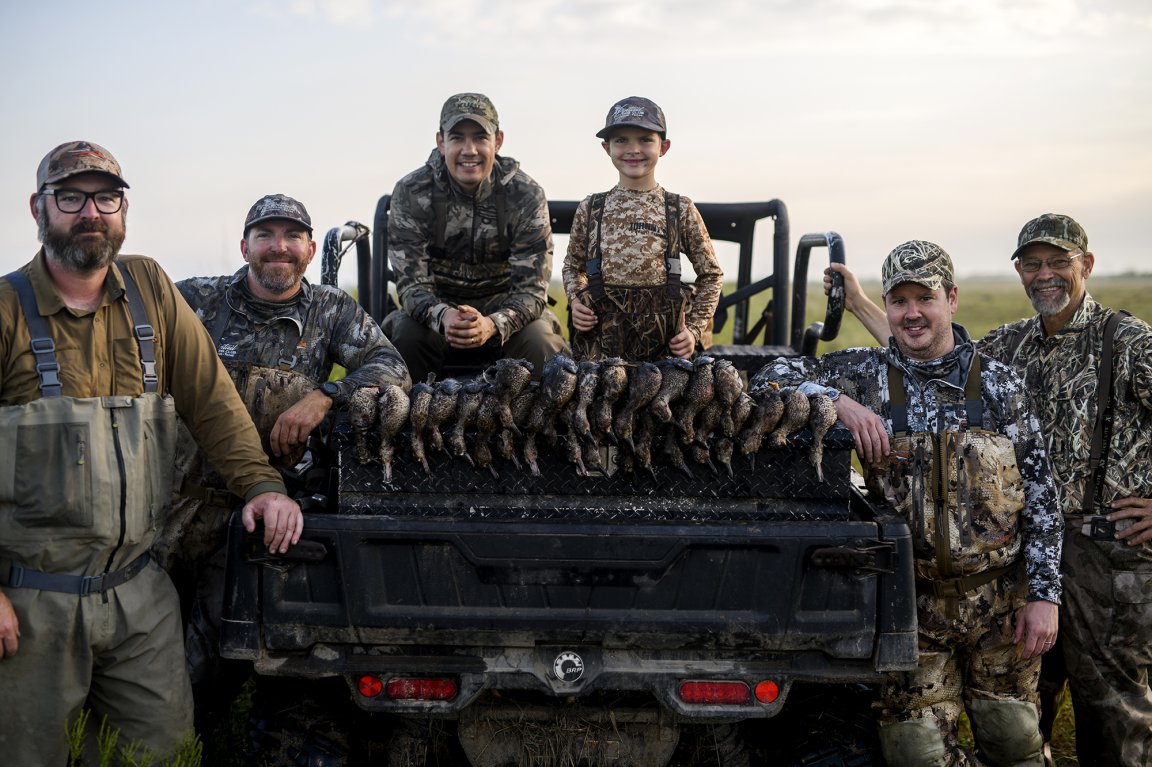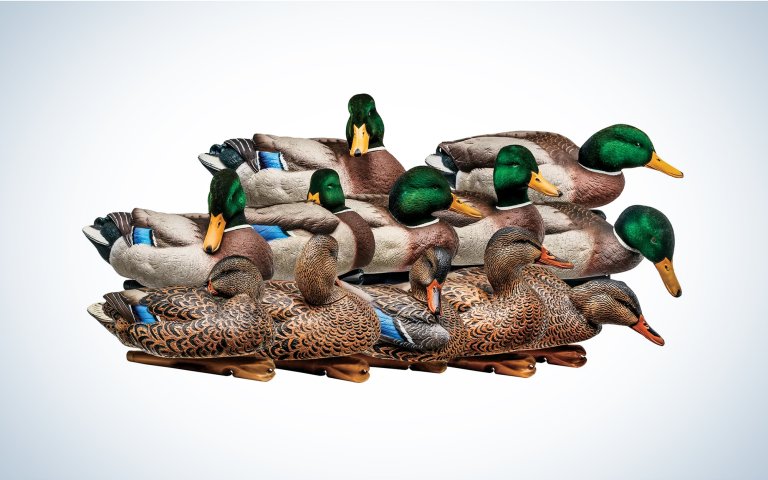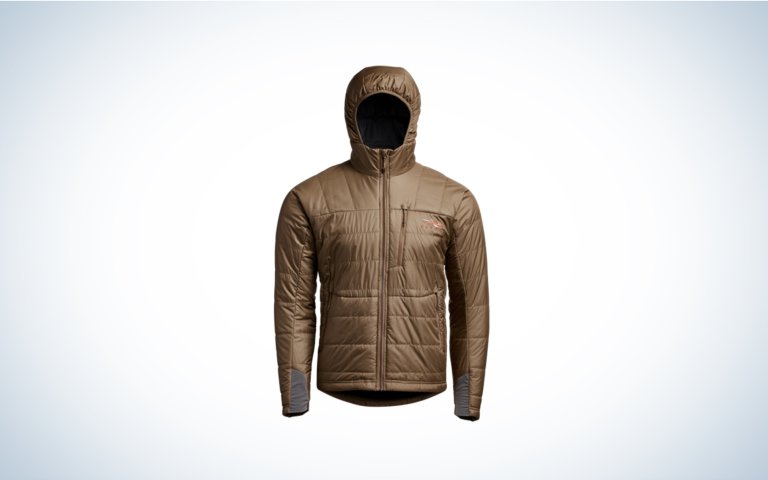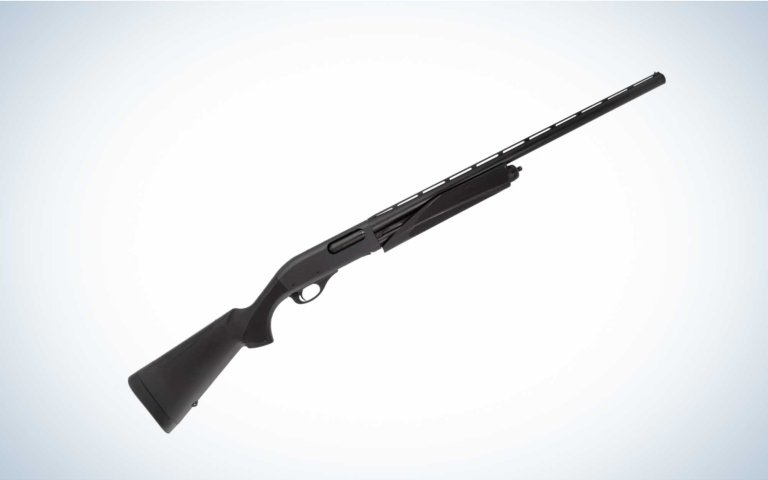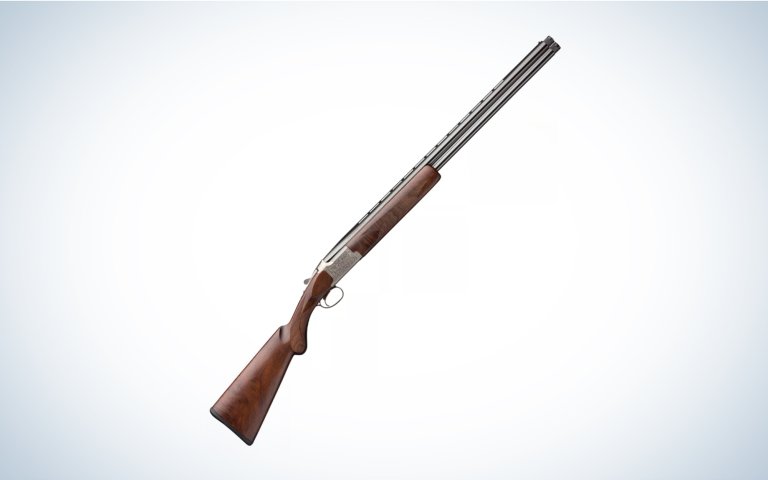As a new duck hunter, you have a long list of tasks ahead before your first opening day, particularly if you don’t have a seasoned hunter to guide you through the process of learning to duck hunt. To get started and set yourself up for success you need to take a hunter’s safety course, have the proper licenses, buy the right gear, know how to identify duck species, observe federal and state game laws, learn how to scout, set decoy spreads, how to call, and know when to shoot. And those are just the basics.
But once you go on a good duck hunt and get hooked on shooting mallards in the decoys, there is no turning back. Waterfowlers get obsessed with their sport faster than any other group of hunters because 1) the seasons are long and we can hunt often and 2) there’s something special about watching the continental waterfowl migration each fall, and then calling in and decoying those birds at close range. North American duck seasons kick off in September in Canada and don’t end until early March in Mexico, with tons of opportunities across the U.S. in between. These long seasons give you the chance to quickly become a better hunter, but it’s important to get off on the right foot. So here is everything you need to know about duck hunting before you spend a single dollar on a garage full of gear.

How to Hunt Ducks, the Basics
Because there’s a lot to duck hunting, there’s a lot to this article. Here’s a handy list to help you find the info you’re looking for more quickly. Read straight through this story, or click on a chapter to jump right to it.
Hunter Education
Navigating Hunting Laws and Seasons
The Different Species of Ducks
Duck Hunting Gear
Hunting with a Duck Dog
Guns, Ammo, and Shooting Practice
Finding a Place to Duck Hunt
Basic Tactics for Any Duck Hunt
Transporting, Butchering, and Cooking Ducks
Hunter Education
The first thing most new hunters will need to do is take a hunter’s safety course. Some states don’t require hunter education to buy a hunting license if you’re of a certain age, but it’s smart to take the class and get certified. Because 1) you may eventually travel to another state to hunt where hunters of every age are required to possess a hunter’s safety card, and 2) you’ll learn how to handle a gun properly and hunt safely.
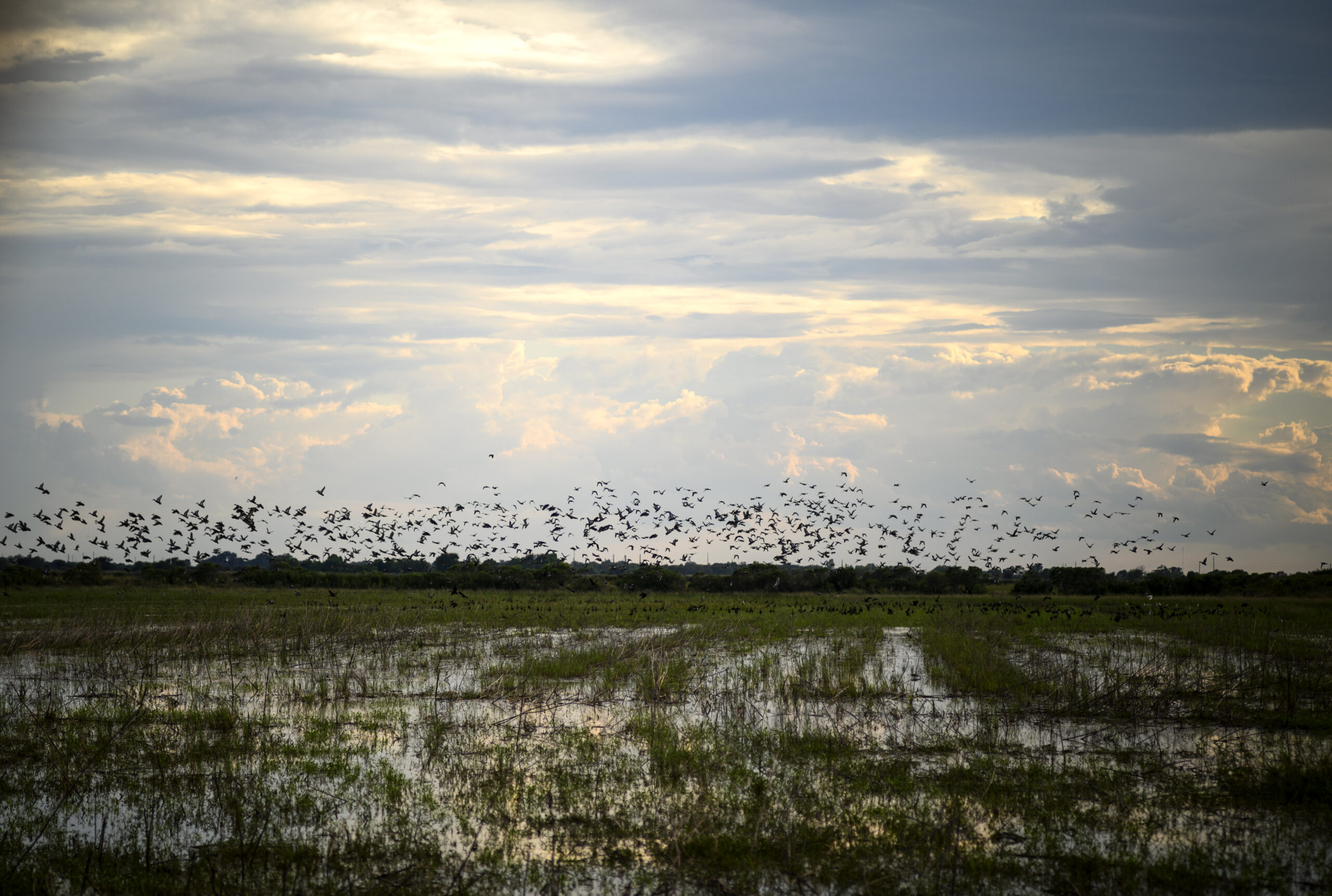
Navigating Duck Hunting Laws and Seasons
Duck Season Dates
Duck season begins on Sept. 1, in Canada and runs through early March in Mexico. In the U.S., the season opens in early September and ends on the last day of January. Many states have an early teal season that opens a few days, weeks, or months before the regular duck season depending on how far south you are hunting.
Early Teal Season

Currently, the bag limit for early teal season is six per day, though the limit can go down to four depending on population status. Typically, blue-wing teal are the species you will be targeting, though green-wings or cinnamon teal (if you’re lucky) are fair game. Some states, like North Dakota, open their regular duck season so early there is no early teal hunt. And in NoDak, you can actually take two blue-wing teal in addition to your six-duck daily limit (eight ducks total) from Sept. 25 to Oct. 10 (be sure to double-check that rule and the dates each season if you hunt there).
Ducks will not have their plumage yet, so the best way to identify blue-wings is by the blue and white speculum feathers on their wings. They often buzz around in large packs, unlike wood ducks, which are most likely to be mistaken for a teal by new hunters. Some states—Florida, Kentucky, and Tennessee—run early wood duck seasons in conjunction with teal season, which is helpful for well-intentioned hunters who mistake a woodie for a teal. It can be difficult for new hunters to distinguish teal from other duck species, which will be around this time of year. Use your best judgement and remember: If you can’t positively identify the species, don’t shoot.
The Regular Season
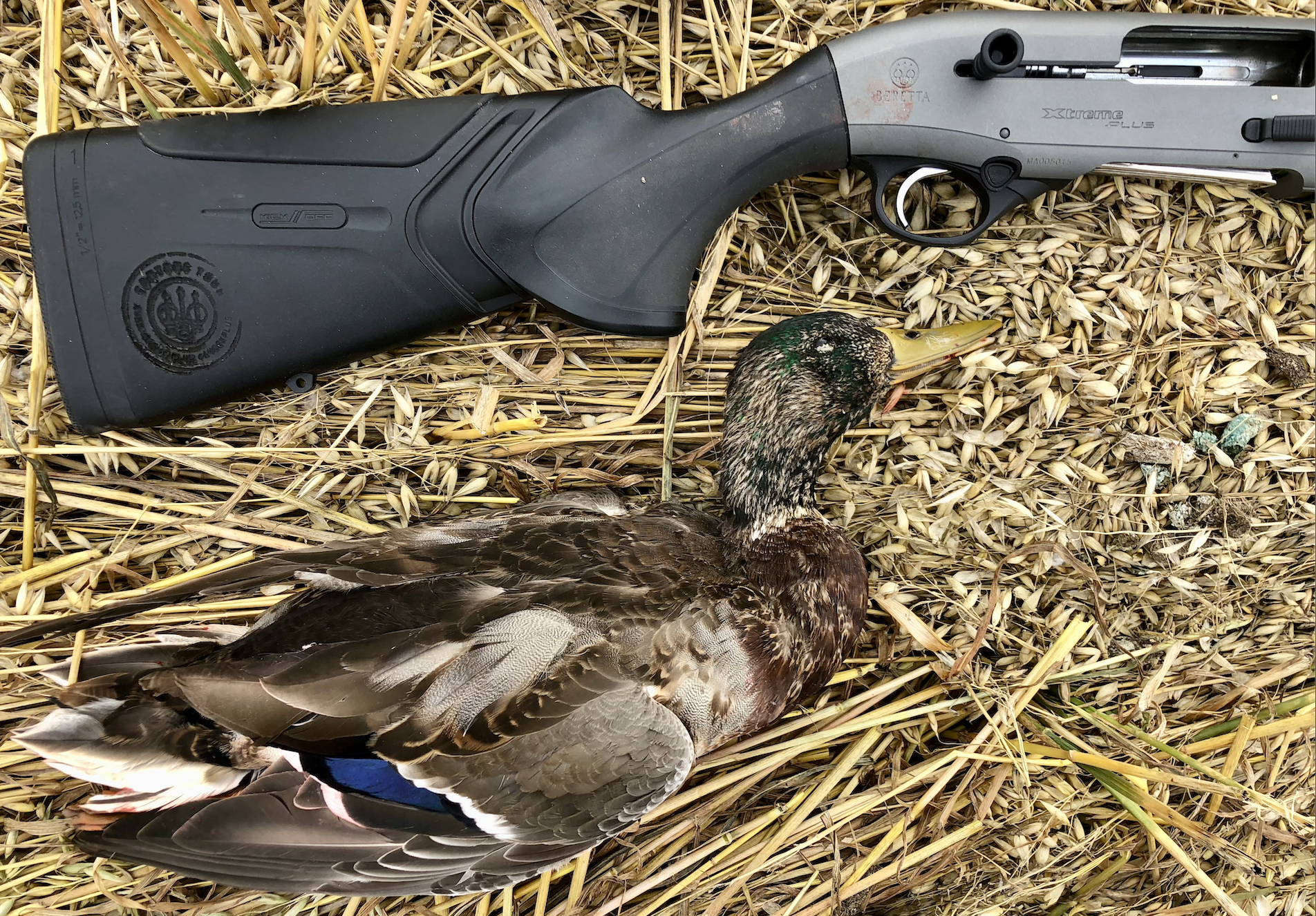
Big duck seasons span September to Jan. 31, in the U.S. Many states use what are called “splits,” which shut down hunting for several days to rest birds and allow seasons to reopen later in the fall and winter for late migrations. States set their season frameworks around decades of historic migration patterns. As weather patterns shift, sometimes season dates do, too. This coordinates with the migrations better.
Keep in mind that the bag limit on certain species of ducks changes during the season in certain states. For instance, in Illinois, the daily bag on scaup is two for the first 45 days of the season and just one in the final 15. States typically have different waterfowl zones that open and close at different times of the year as well. Let’s stick with the Illinois example. It has four zones: north, central, south-central and south. Some of the boundary lines split one county into two different zones, so it can get confusing. If you aren’t sure which zone you’re in, contact the state’s wildlife agency.
Early in the season, you will be hunting teal, wood ducks, local mallards, pintails, ringnecks, wigeon, redheads, and northern shovelers. As cold snaps arrive, those early birds will depart and more migrating mallards, black ducks, and gadwall will trickle in from the north, along with divers, like scaup, canvasback, and goldeneye. The species you see will also depend on where you hunt. The Ducks Unlimited Waterfowl Identification chart is a great resource to find out more about the appearance and habits of all waterfowl.

The Duck Stamp
You must also purchase a hunting license, state duck stamp, and federal duck stamp prior to hunting. Ninety-eight percent of all federal duck stamp money goes directly to help acquire and protect wetland habitat, and to purchase conservation easements for the National Wildlife Refuge system. It’s one of the most successful conservation programs in North America, so you can be proud that your dollars are helping to protect waterfowl habitat.

The U.S. Flyways
There are four waterfowl flyways in North America—Pacific, Central, Mississippi, and Atlantic—and each has different daily limits for the number of ducks you can kill by species that comply with guidelines set forth by the U.S. Fish and Wildlife Service. Each province in Canada also has a different set of daily limits for ducks, which is set by the Canadian Wildlife Service. So, if you go to British Columbia, Alberta, Saskatchewan, and so on, check the provincial game laws before hunting.
In the Central, Mississippi, and Atlantic flyways, you can shoot six ducks per day in the U.S. In the Pacific Flyway, the daily bag limit is seven ducks. Within those daily limits, you can only take a certain number of each species. For instance, the mallard limit in Atlantic flyway states is two (only one hen allowed); in Pacific flyway states, the mallard limit is seven (two hens allowed). Check the waterfowl digest of the state you’re hunting to make sure you know which ducks you can kill before you pull the trigger.
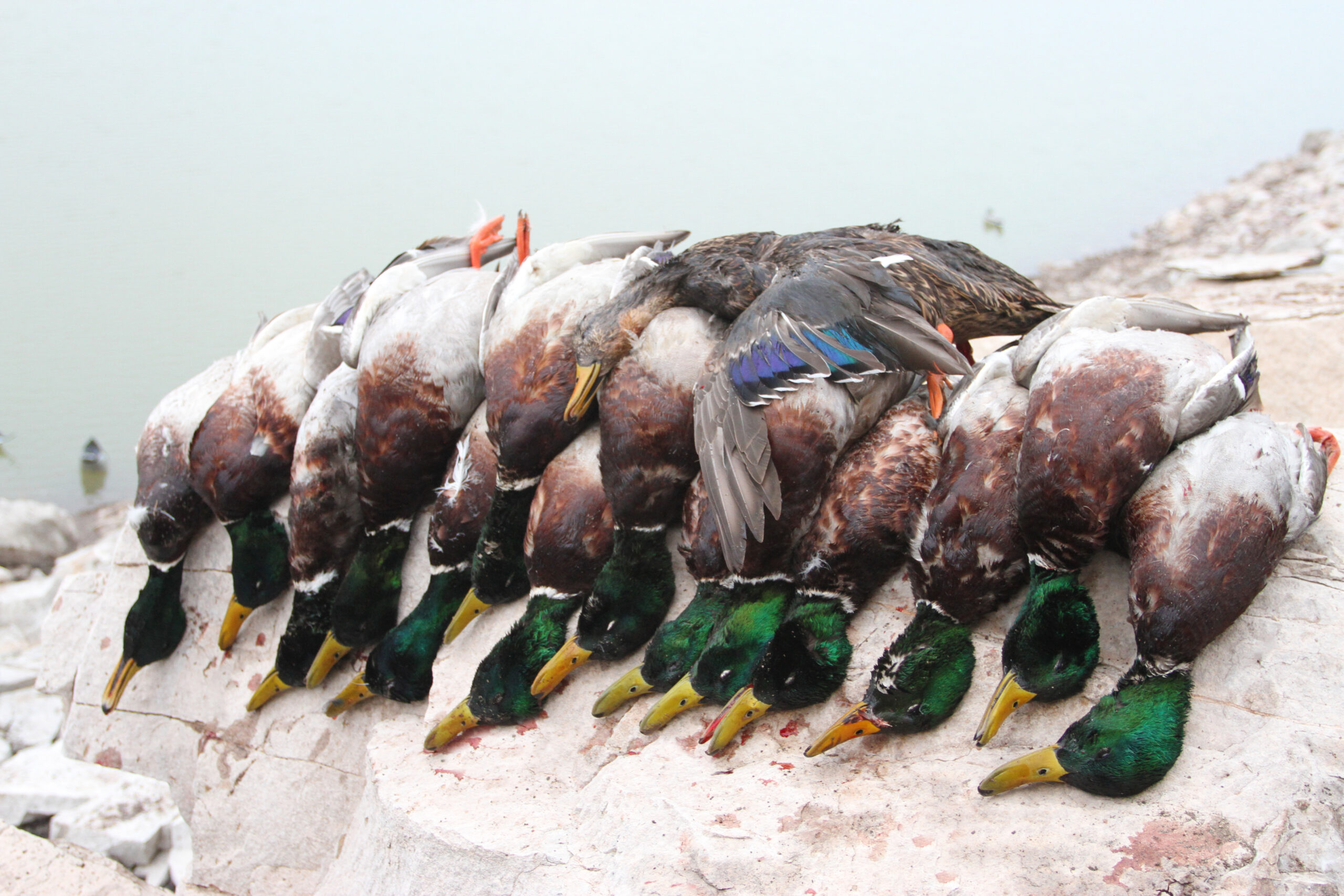
Bag Limits
Every hunter must abide by daily and possession limits. For U.S. hunters in the Atlantic, Mississippi, and Central flyways, the daily limit is six ducks; for Pacific flyway hunters it is seven. In the western Canadian provinces—British Columbia, Alberta, Saskatchewan, and Manitoba—you can shoot eight ducks per day. As you go further east into Ontario and Quebec, the daily limit falls to six. Mexico has more liberal limits that range from 20 to 30 ducks per day depending on the region you hunt.
Possession limits in the U.S., Canada, and Mexico are three times the daily limit. That means you can possess 18 ducks if the daily limit is six. In Canada, the possession law has changed. Once you pluck a duck or remove the meat from the carcass and it is frozen, cooked, dried, canned, or smoked it no longer counts towards your possession limit. You can also transport birds processed in this manner in one batch with a single tag. That is not the case in the U.S. or Mexico where any duck that has not been consumed counts against your possession limit. That means if you grind duck meat up for snack sticks you are still in possession of that bird until they are eaten, though enforcing the law in such a scenario would be next to impossible.
Migratory Bird Laws
The biggest hurdle for new hunters is staying legal under the rules set forth by federal and state migratory bird laws. The Migratory Bird Act of 1918 protects all waterfowl species and some of its guidelines for legal take are downright confusing. You also need to understand that federal law can differ from an individual state’s law. For instance, wanton waste requires that you retrieve—or do your best to retrieve—all migratory waterfowl you shoot. Now, under federal law, you could technically retrieve a dead bird only to pitch it in a dumpster at the gas station—and that would be perfectly legal to the feds (but please don’t do that). Under most state laws, however, that would be illegal. Most states require you to at least harvest the breast meat of a duck. Some states mandate you take the thighs and upper wings as well.
Another quirky federal law is that you can’t manipulate crops and then hunt waterfowl over them. So, if you drive into a cornfield and your truck tire crushes an ear of corn and a kernel falls off the cobb, that’s technically baiting, and you can be cited for it. Similarly, if you’re wading in flooded millet and knock a seed head off, that’s also crop manipulation, and you’ve just broken the law.
Confused? Don’t worry. I’ve been duck hunting for 20 years and there are still rules I don’t fully grasp. Luckily, this story about a former waterfowl guide who was busted by the feds for baiting and other game law violations, covers a majority of the legal issues you will face as a duck hunter. Be sure to read both the federal and state regulations where you’ll be hunting. Call your state game agency to clarify anything you don’t understand.
The Different Species of Ducks
There are 32 huntable species of ducks in North America that fall under three different categories: puddle ducks, diving ducks, and sea ducks. Puddle ducks can be found in almost any suitable waterfowl habitat, though you aren’t likely to see many on the open ocean. Divers are typically hunted on big water, like lakes, reservoirs, rivers, and ocean bays. Sea ducks generally stick to coastal areas, but you can also find them in the Great Lakes. It’s rare, but sea ducks will also migrate along the interior river systems that cut through Canada and the U.S. Here is a breakdown of each legal species by category:
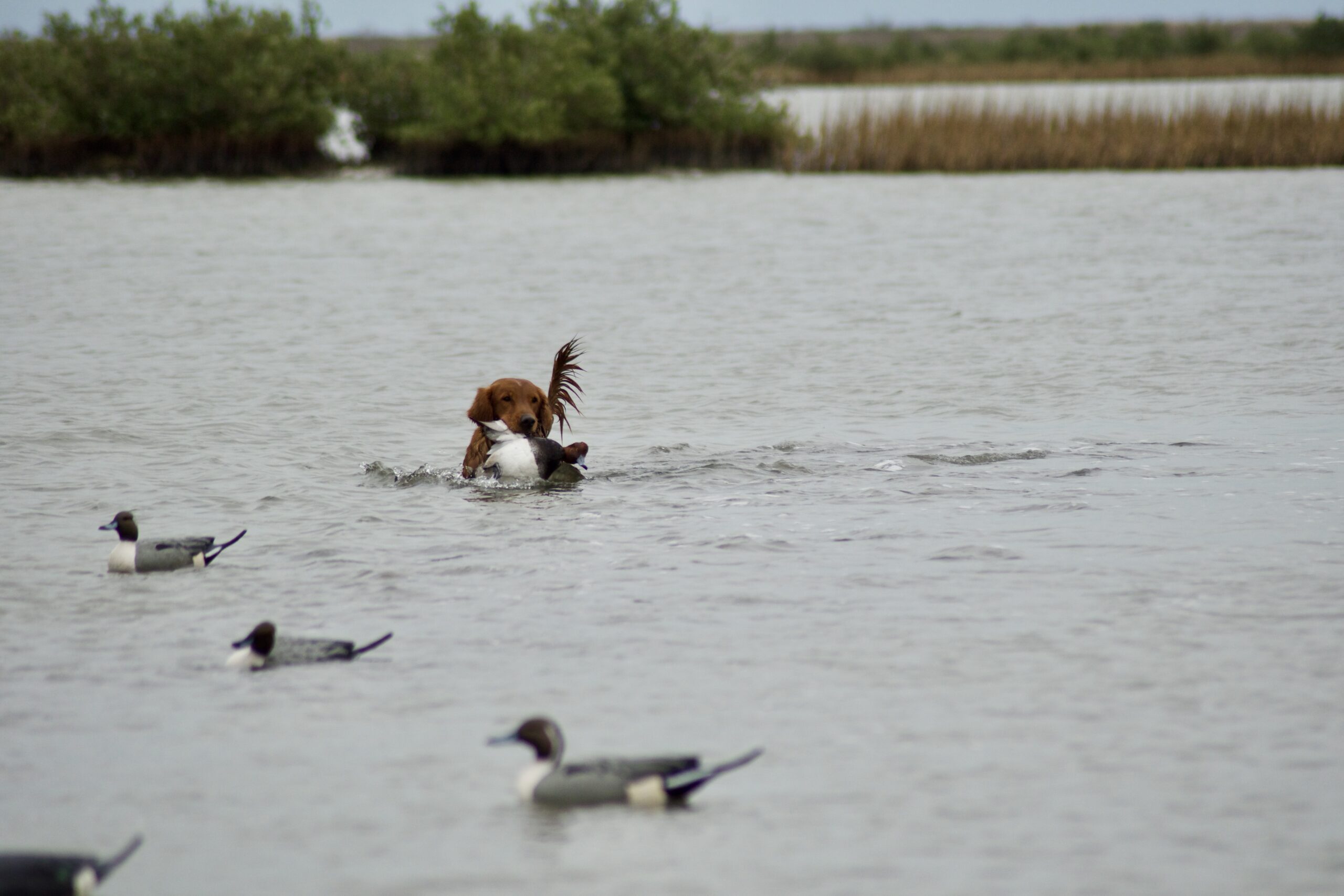
Puddle Ducks
Puddle ducks species include mallard, northern pintail, teal (greenwing, bluewing, cinnamon), black duck, wigeon, gadwall, Mexican duck, mottled duck, shoveler, wood duck, black-bellied whistling duck, and Fulvous whistling duck.
Diving Ducks
Diving duck species includecanvasback, redhead, scaup (greater and lesser), ringneck, common goldeneye, Barrow’s goldeneye, bufflehead, ruddy duck, merganser (common, hooded, red-breasted).
Sea Ducks
Sea duck species include king eider, common eider, harlequin, long-tailed, scoter (black, white-winged, surf).
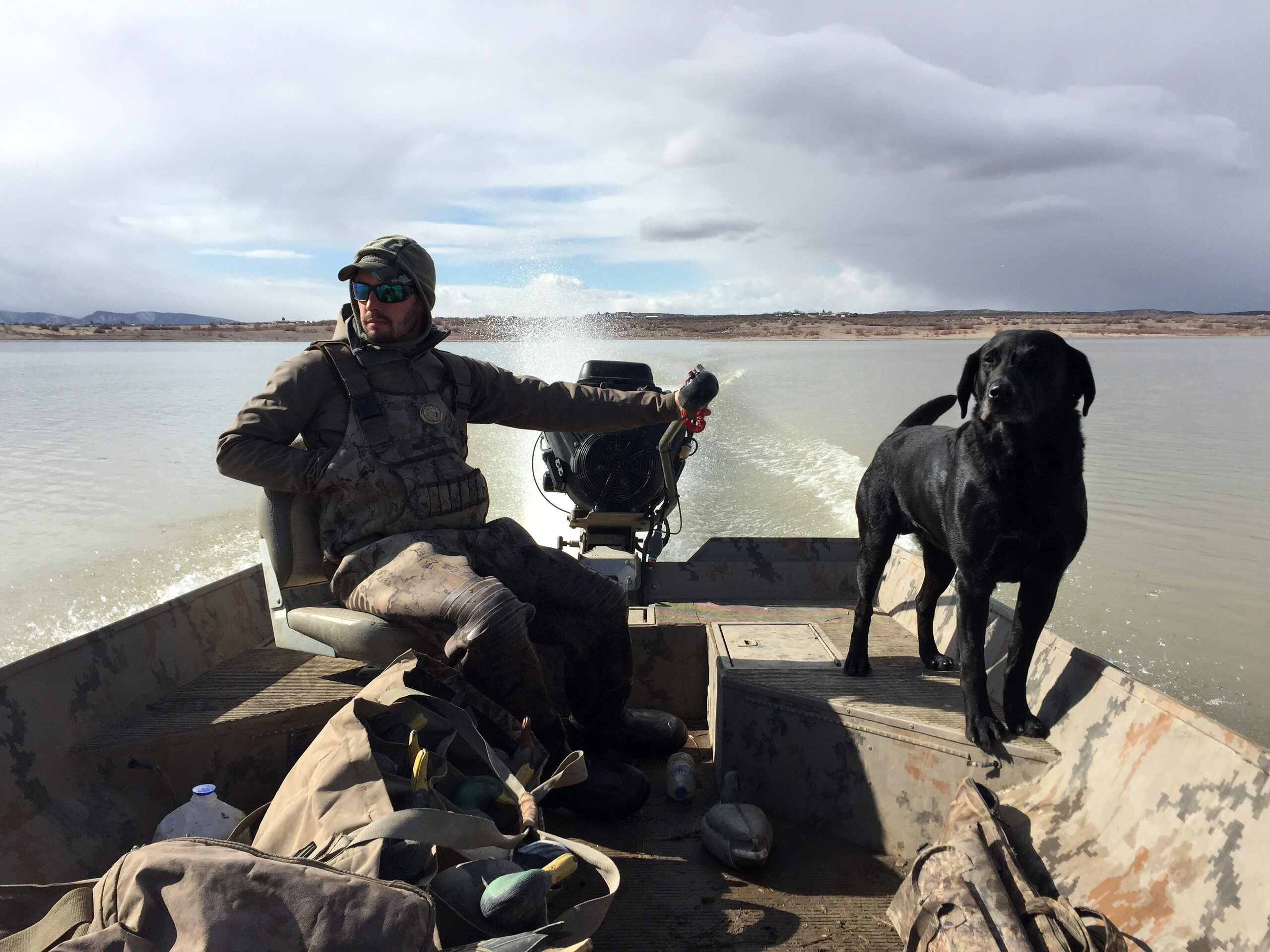
Duck Hunting Gear
Duck hunters are gear fanatics to the point that we sometimes become more obsessive about the tools we use to kill ducks than the ducks themselves. Most of us end up with garages full of decoys and blinds and pull high-dollar duck boats behind our beat-up Chevys. You don’t need piles of gear to get started, but there are some necessities for a morning in the marsh.
Decoys
If you’re a walk-in or boat-in hunter, foam-filled floaters are ideal because they cut down on weight. They’re not always as realistic as some of the flocked, molded decoys, but you can carry more of them, especially if you have a small flat-bottom where payload matters. They’re also durable. Decoys are bound to get shot and the foam floaters will soak up pellets far better than plastic ones. Lifetime makes an incredibly light decoy called the FlexFloat as well. You can buy inexpensive decoys, like the Flambeau Storm Front2 mallards, especially if you’re new to the sport because you will be spending a considerable amount of money to outfit yourself. Also look for hunters selling used decoys (Facebook is a good resource). Just make sure you find out what brand of decoy you’re buying and check how much a new six- or 12-pack costs before you buy used. Sometimes it’s worth spending a few extra dollars more on new decoys, or a seller may be trying to take advantage of a greenhorn, who doesn’t know the price of decoys.
Read Next: Best Duck Decoys
Avian-X TopFlight Mallard Duck Decoy Outfitter Pack
See ItFor permanent spreads where the decoys will stay in the blind all season, you can pick a heavier, more durable decoy. These are typically more expensive, but they tend to last longer and are worthy of repainting and flocking as decoys age. If money isn’t at issue, the G&H Magnum Mallards are a fine choice. Avian-X also makes a high-quality, realistic floater as does Dakota. Don’t rely on internet images and reviews to buy expensive decoys. Either go look at them in the store or buy decoys in six-packs at a time. Every duck hunter has a different opinion of what realistic and durable mean, so take the time to find out for yourself before opening your wallet.
I don’t get overly concerned with the look of field decoys as much as I do how long they will last because when mallards are feeding in fields they key more on the spinning-wing decoys (which I will get to shortly) than staked out plastics. That said, the best-looking field decoys are the most durable. Avian-X, GHG, and Dakota all make good ones. If you see a manufacturer trend developing here, it’s not a coincidence. There are a handful decoy companies that make a quality product and it slides slightly downhill from there. That’s not say you can’t get a good life out of cheap field full-body, but you must be very careful with it. Tossing plastic dekes into a trailer on a bitter cold day doesn’t lend to that. The less expensive the decoy, the more likely it is to shatter.
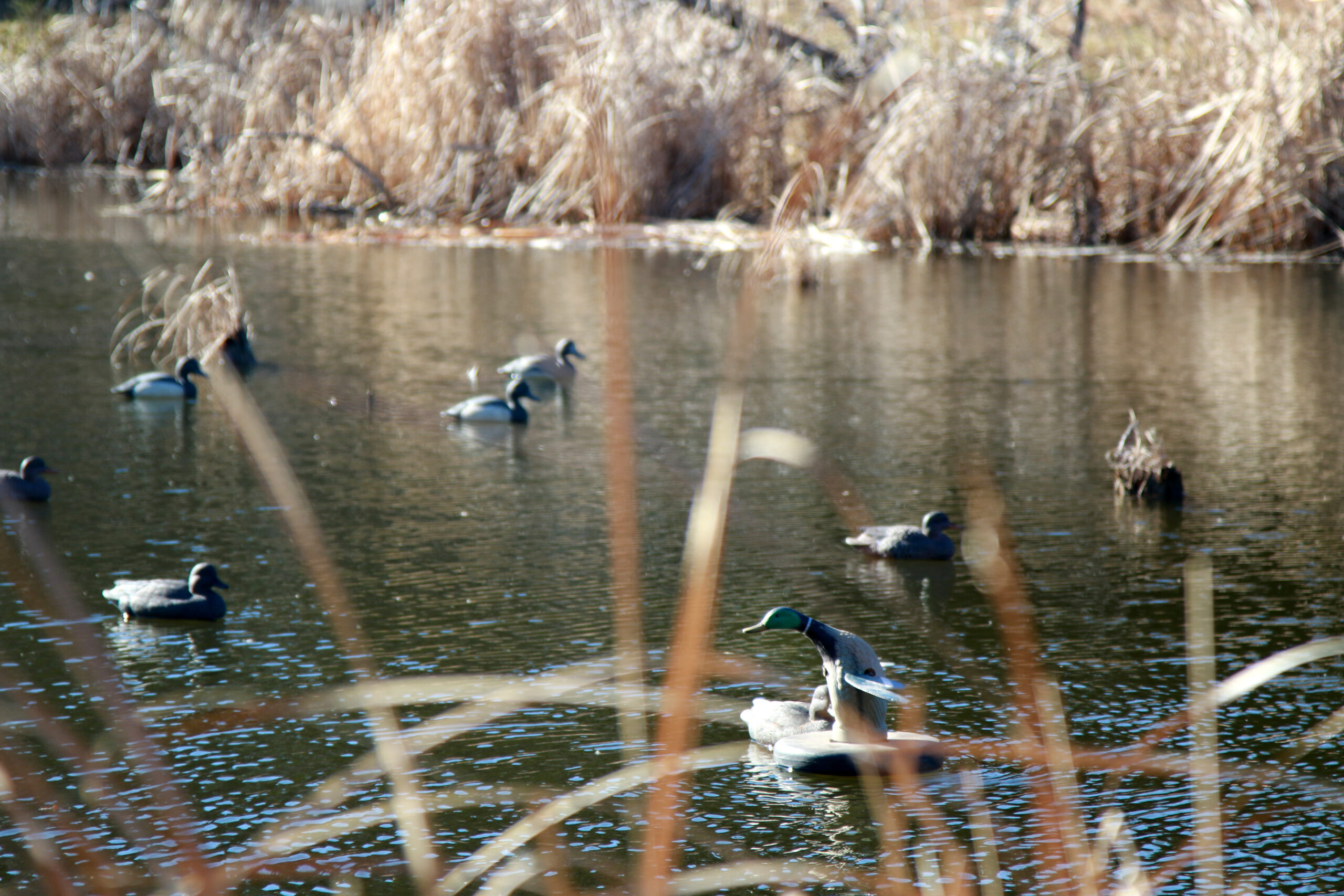
Motion Decoys
Just about every duck hunter uses motion to make it look like real ducks are landing in their spread or real ducks are feeding on the water. Jerk rigs—a series of floating decoys attached to a string creates ripples in the water and adds motion to stagnant decoys—are a man-made way to create motion. The hunter holds the string and tugs on it from his hide.
MOJO Motorized Duck Decoy
See ItThere are also spinning-wing decoys. The most commonly used spinner is made by Mojo, but Lucky Duck and Avian-X also make a spinner. These decoys simulate a bird landing on the water or in a field, but it’s the flash of the wings that attracts ducks from distance. On-water-motion is one of the deadliest ways to trick ducks as long as they move naturally. If you look at ducks from above, they are almost constantly moving when they feed, so adding a few Higdon Pulsators or Wonderducks to your spread will add realism, too.
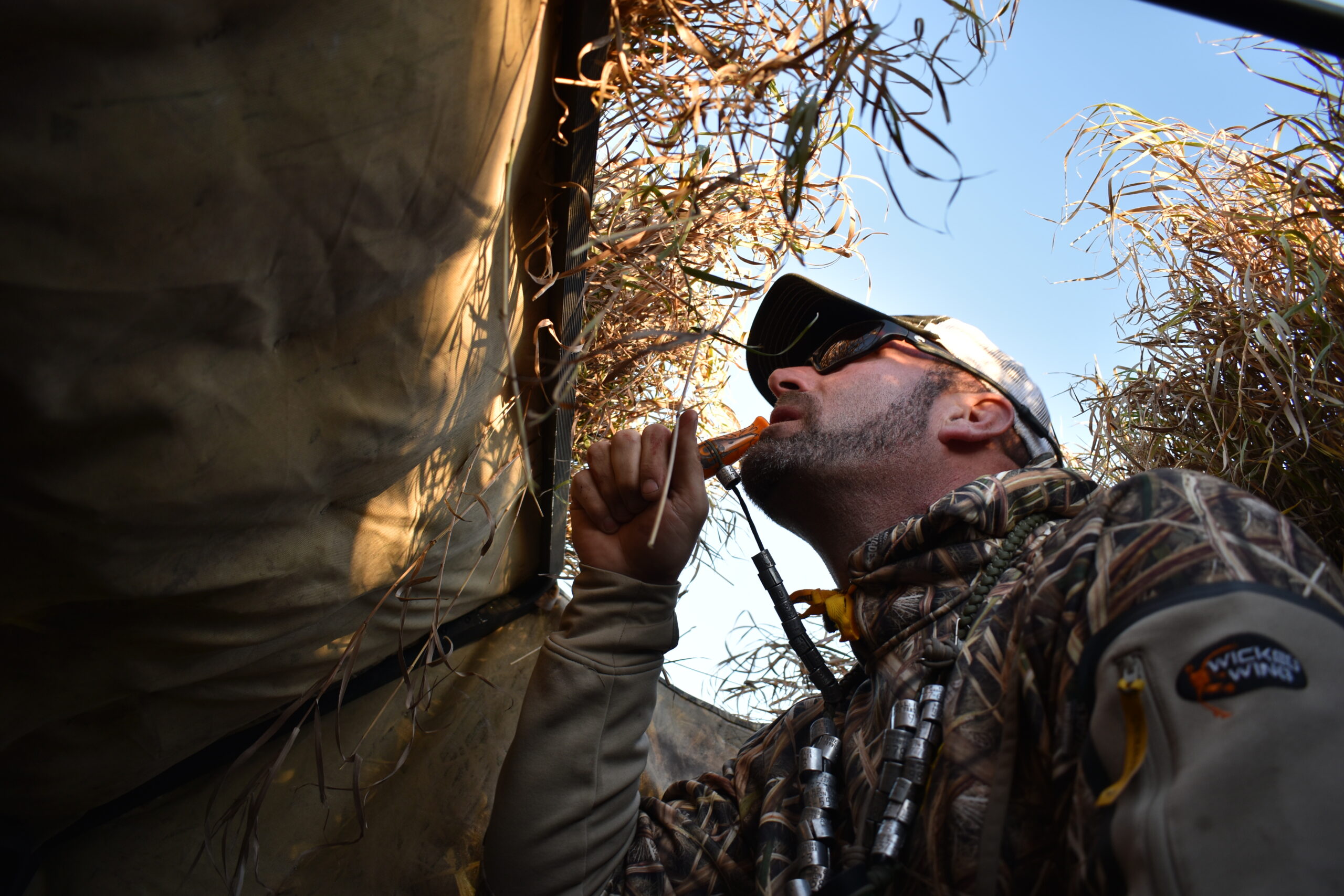
Duck Calls
There are an overwhelming number of duck calls on the market, from production calls to custom-made acrylic and wood calls. There are single- and double-reed options. The singles typically take more air pressure, which you push through the call from your diaphragm, to operate. Most hunters think they are harder to blow. Doubles take less air pressure and are thought to be geared more toward beginners. Really, it just depends on your calling style.
Your best bet is to pick an affordable, but quality call. Zink’s PH-1 (Power Hen) is a great option. It’s a polycarbonate call, so it doesn’t cost much (usually around $30). It’s a single-reed, but you don’t have to hammer on it to get the PH-1 to sound like a Susie (that’s duck hunter slang for a hen mallard). Another option, if you want to sound like a mallard from the jump, is an RNT Mondo. Mondos are cut-down calls and don’t require you to pull the air from your diaphragm. All you do it blow into it with a ducky cadence for instant quacks.
Read Next: Best Duck Calls
Waders
SITKA Delta Zip Wader
See ItThe most inconvenient expense for duck hunters are usually waders. Simply put, they will eventually fail when you need them to perform. If you hunt enough, there’s no way around it. Like duck calls, there are an assortment of waders on the market. In recent years, “premium” breathable waders built by Sitka made the $1,000 wader a reality. For decades, duck hunters relied on heavy and uncomfortable—but inexpensive—neoprene waders. Now waders have become pricey. The Sitka waders are a fine product, as are the new breathables from Chene. Essentially, both companies took a technology that Simms and Orvis use in their fly-fishing waders, and applied it to waterfowl.
While Sitka and Chene make a solid wader, that premium price has allowed other manufacturers to increase the price of their own waders without really improving the materials. If you can’t afford a premium wader, then I would also caution you against buying a $400 to $600 wader. Because in my experience, those mid-level waders fail just as fast as a $200 wader. So, you are better off buying two or three pairs of Frogg Toggs or Rogers (they are the same wader with a different brand slapped on top), so when your primary pair of waders does fail halfway through the season, you’re not waiting on a manufacturer repair to go hunting.
Read Next: Best Duck Hunting Waders
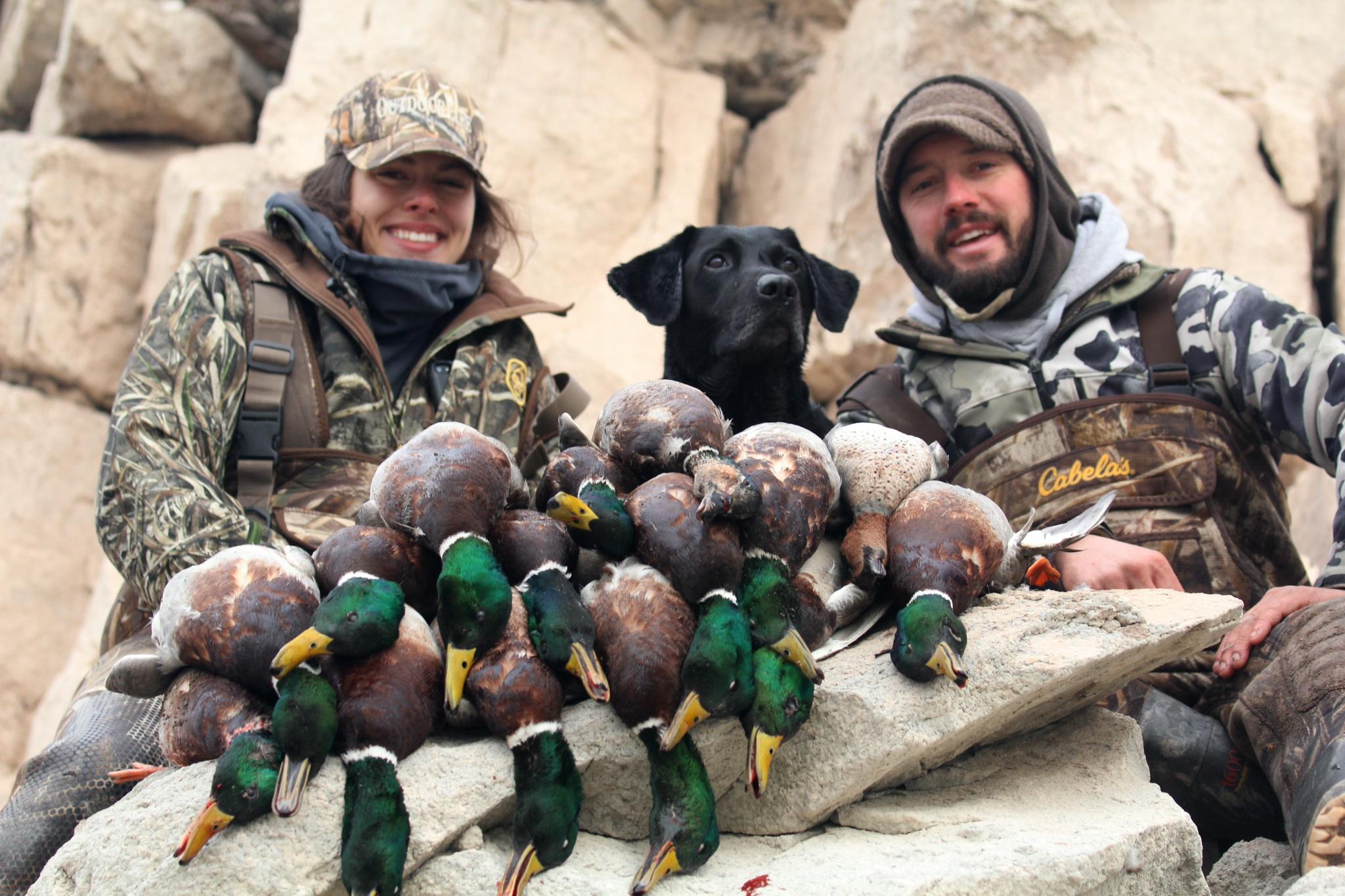
Baselayers
A lot of the clothing companies that cater to duck hunters promote their gear as having superior warmth and best-in-class camouflage. Well, staying warm and concealed is important, but you don’t necessarily need to buy a clothing “system” for that. Base layers are the best way to keep toasty during a cold morning. Use merino wool. The material is more expensive, but it wicks away moisture so if you start to sweat on the walk in or while throwing decoys, most of that perspiration will not sit on your skin and turn cold once you stop moving. If you’re hunting in waders, a base layer or two paired with a thick pair of sweatpants will keep you comfortable. There are all kinds of wader pants. Some hunters just wear blue jeans, which is fine, but they will limit your movement and are not warm.
Read Next: Best Base Layers for Hunting
Field Hunting Bibs
If you field hunt, a pair of insulated brown Carhart’s will get the job done. They are the most durable bib I have ever worn for the money, though they aren’t ideal for hunting in the rain or sloppy conditions. Carhart’s only repel water—they aren’t waterproof. If you want an affordable pair of hunting-specific bibs that are waterproof, try Dan’s Bulldog bibs. Every manufacturer of duck hunting clothing makes a bib, but I have yet to wear any that are as reliable as these two. That’s mostly because the zippers are always breaking, but both Carhart and Dan’s use buttons. If one of those break, you can easily replace it.
Hunting Jackets
SITKA Kelvin Aerolite Jacket
See ItFor jackets, it’s best to go with a lightweight, but warm outer layer that you can pair with a waterproof shell. This is where I like to spend a little more money. Most days, I wear a merino top, sweatshirt, and Sitka’s Kelvin Aerolite jacket. It’s $300, but incredibly comfortable and warm for temperatures 20 degrees and above. If it’s going to be colder than that, I add a wool-lined hoodie under the Aerolite. In the rain or snow, I throw on an old Filson shell that’s lasted more than two decades, but those jackets have become expensive. Your best route is a Helly Hansen rain jacket for $100.
Read Next: Best Duck Hunting Jackets
Duck Hunting Boats

You don’t need a boat it get started in duck hunting, so it shouldn’t be the first gear item to check off your list. But when you are ready to buy, a johnboat and 25-horsepower outboard will give you access to a variety of duck habitat. That said, there are all kinds of high-dollar duck boats with equally pricey mud motors, longtails, and jet drives mounted to the transom. Before you invest in anything, think about where you will be hunting.
A 15-foot flat-bottom is acceptable for small lakes and rivers, but hunting big water requires a bigger rig with a more powerful engine to remain safe. Ocean bay hunting is even more treacherous, so you will need a specialized boat rated for those waters. Also, you’re going to be navigating in the dark most of the time, so you need adequate lighting. Using GPS as an added backup is smart too. If you don’t have much experience operating a boat, don’t strike out into the Great Lakes or San Francisco Bay in search of divers and sea ducks. Start small, working your way up to more challenging water. Talk to and hunt with folks that know how to run fast-moving rivers and ocean chop. Also, never buy a boat right before duck season if you can help it. Wait until the end of the season. Hunters will be looking for extra cash or to upgrade to a better boat and selling their old rigs for less.
Decoy Trailers
Like boats, decoy trailers come in all shapes and sizes. If you’re a field hunter, you will likely need one—unless you run a silhouette and sock spread that fits in the truck bed—to house all your full-bodies, blinds, and other assorted gear. Consider how many decoys you have and the length of trailer you will need to hold them all before buying. Open trailers are cheaper, but an enclosed trailer keeps your decoys in better shape, and you can also lock everything up. Don’t buy a new trailer, either. There are always good used deals at the end of the season, just like boats.
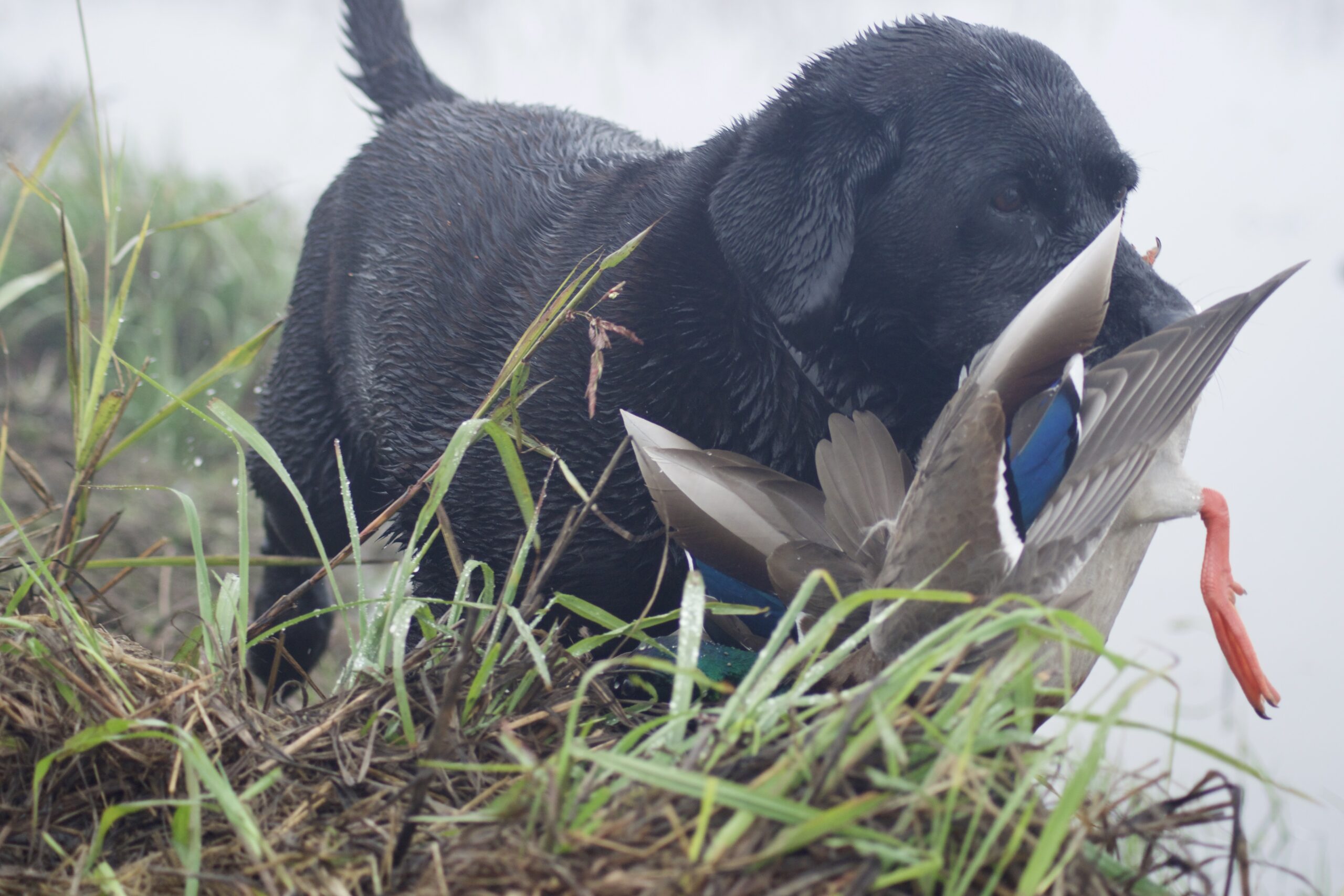
Hunting with a Duck Dog
You don’t need a retriever to duck hunt, but they sure make hunting more fun. And because of their heightened abilities to mark dead birds and scent track them, a good dog will recover more ducks than a hunter can. In duck hunting, you are going to lose birds, but the number you lose will be far less with a good retriever by your side.
Gun dogs allow you to hunt places you wouldn’t be able to otherwise. For example, if you don’t have a boat or a dog, any water that’s deeper than your chest is off limits. Dogs can also retrieve birds faster, particularly handy when you have multiple hunters in the blind. And of course, dogs are great companions. You will always have someone eager to hunt with you, even when your buddy’s no-show in the morning at the boat ramp.
Picking a Duck Dog
Labrador retrievers are the most popular duck hunting breed, but there are an assortment of other breeds—Chesapeake Bay retrievers, golden retrievers, spaniels, tollers, German shorthairs, and more—that can do the job as well. Even recuses can make good bird dogs. However, to put the odds are in your favor, you should do some research and buy from a reputable hunting dog breeder. That includes finding out if the pup is AKC or UKC registered. Find out what hunt test or field trial titles (if any) the dog’s sire and dam have. Bloodlines are critical to picking a pup. You want to see a long line of accomplishments in the family history.
Also, research which breed will be the best fit your personality and situation. If you hunt ducks and upland birds, pick a breed that has the natural ability to do both.
A Note on Safety When Hunting with Dogs
You should always carry a first-aid kit with you when hunting (or at least have one in the truck) in case another hunter or your retriever is injured. Treat the safety of hunting dogs like you would that of another human.
- Always have control of your dog. Do not let him break. A dog that breaks could be shot accidentally by another hunter.
- Don’t shoot crippled ducks on the water or ground while a dog is on retrieve.
- Consider the weather when you’re hunting. Early-season it may be too warm and the dog could overheat. Some dogs also are not used to extremely cold temperatures and may go into shock if you try and hunt them.
- If a dead duck falls on thin ice, don’t send the dog. If your pup falls through in deep water, you may not be able to rescue him.
- Keep your dog hydrated no matter the conditions. A retriever can become dehydrated in the cold.
- Always have the number of the nearest veterinarian and know how to drive there. This is especially important if you are hunting in another state.
- Check your dog for injuries after every hunt, and be sure to keep his eyes and paws clear of any grass seed—they can cause infection.
- As your dog ages, consider his limitations. A 10-year-old retriever will not be able to perform at the same level as a 3-year-old.
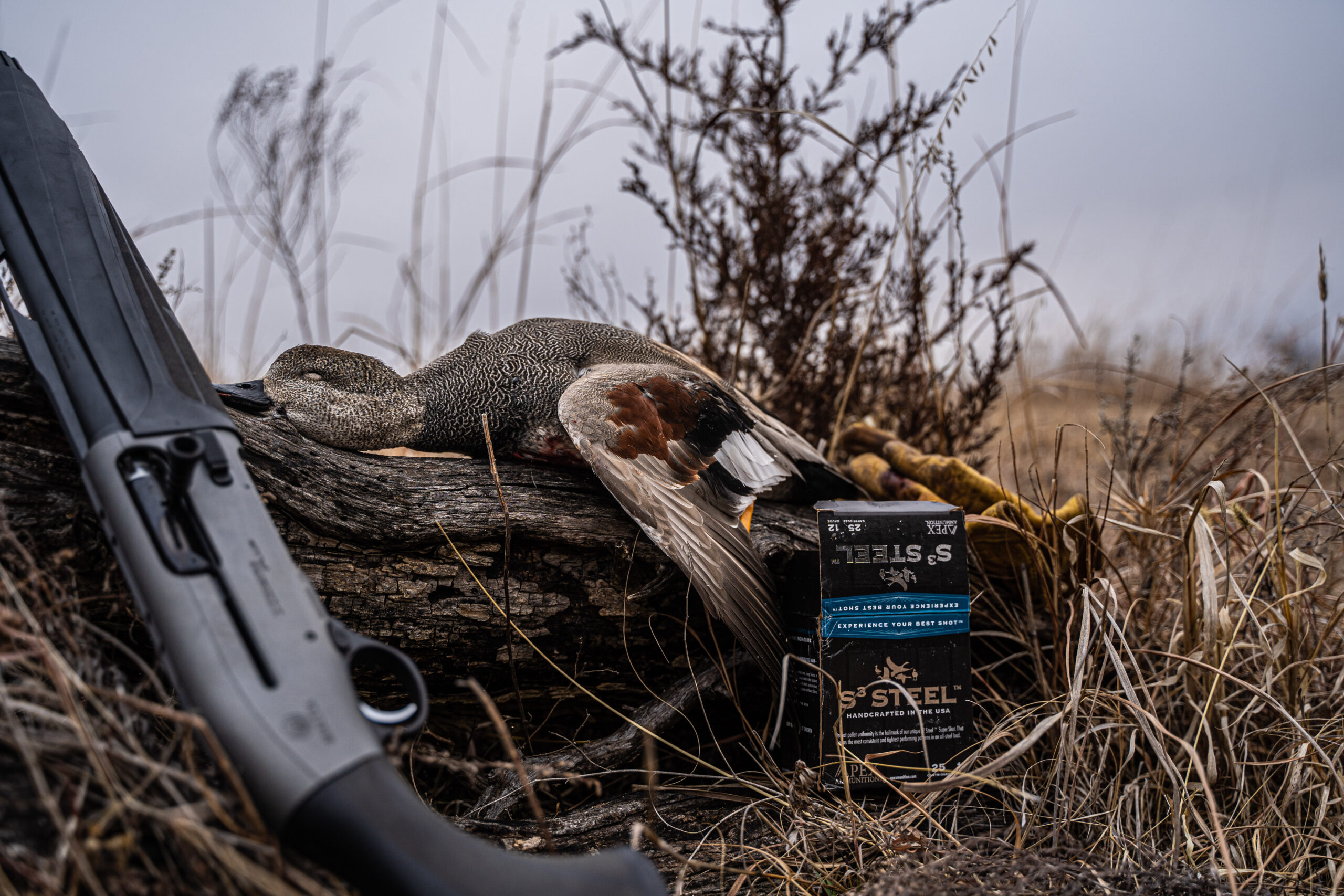
Guns, Ammo, and Shooting Practice
Even if you’re a longtime duck hunter, buying a duck gun can be a daunting task. There are so many models to choose from—let alone deciding which gauge to buy—and each individual gun can have its own quirks. Also, you don’t often get to shoot the gun before you buy it unless one of your buddies has the same model or the local range has a field day to test new smoothbores. So it’s hard to know if the gun you want even fits you. Semi-autos are the most popular, followed by pumps and break-actions. All three are viable hunting options, and a 12- or 20-gauge is best for beginners.
Semi-Auto Shotguns
Beretta A400 Xtreme Plus Semi-Auto Shotgun
See ItSemi-autos are split between gas-operated and recoil (inertia) driven shotguns. Gas autos typically recoil less but need to be cleaned more often to function; inertia guns produce more felt recoil but don’t need as much maintenance. You can’t go wrong with an Italian-made semi-auto, like Beretta or Benelli. The Beretta A400 Xtreme Plus is the best gas gun in production today if you have the cash to spend on it, and Benelli’s SBE3 is No. 1 for inertia gun lovers.
If you want to buy something more affordable, the best value guns are made by Franchi and Tri-Star. There are also plenty of used guns to be had. Some of the best include: John Browning’s Auto-5, Remington’s 1100, the early 1990s Beretta A300 series, H&K imported Benelli Super Black Eagle or M1 Super 90 or any of the Winchester Super X series of shotguns. Just know, some of these autos were made prior to the lead shot band, so you can’t safely shoot steel through some of them. You must use bismuth or Kent Tungsten-Matrix, which are slightly more expensive than premium steel.
Read Next: Best Shotguns for Duck Hunting
Pump Shotguns
Rem Arms Fieldmaster
See ItThe most reliable platform is the pump because cycling is dependent on the operator—not gas or recoil—shucking the fore-end forward and back. They can breakdown like any other shotgun of course, but there are few moving parts, so pumps are easy to fix. Plus, most of them are inexpensive. The most popular is the Remington 870. Mossberg’s 500 is also a popular option, and if you want to spend a little more on a high-end repeater, Browning’s BPS is a fine choice.
Read Next: Best Pump Shotguns
Break-Action Shotguns
Browning Citori
See ItOver/unders and side-by-sides are not that popular with duck hunters, though the side-by-side was once a go-to platform for waterfowlers. They aren’t as convenient to shoot from a blind because you must break them open to load and unload, and you only get two shots as opposed to the three shots that autos and pumps offer. But they are both capable and reliable platforms—the Browning Citori is among the most popular shotguns of the last half-century.
And one of the cool options with a break-action shotgun is the opportunity to shoot multiple gauges from the same action with different sets of barrels. For instance, a friend of mine has two Remington 3200s. One is capable of firing 10- and 12-gauge rounds, the other shoots 20 and 28. Several manufacturers also offer multi-barrel shotgun combinations, so you can get two gauges at a reasonable price (though some of these guns are expensive).
Shotshells
To legally hunt waterfowl, you must use non-toxic shot (lead was banned in the early 1990s). Steel, bismuth, Hevi-Shot (a tungsten-iron alloy), and TSS (tungsten super shot) are all acceptable options. Steel is least expensive of the bunch and TSS is most costly. The reason for that is the quality and density of the different metals. The denser the metal, the more effective it is at killing ducks. Steel is 7.8 grams per cubic centimeter (g/cc), bismuth is 9.6 g/cc, Hevi-Shot is 12 g/cc, and TSS is 18 g/cc. The best shot size for ducks depends on which type of non-toxic shot you shoot. For steel, No. 2 to 4 shot is best. Use 4s or 5s for bismuth, 5s and 6s for Hevi-Shot, and 7s to 9s for TSS.
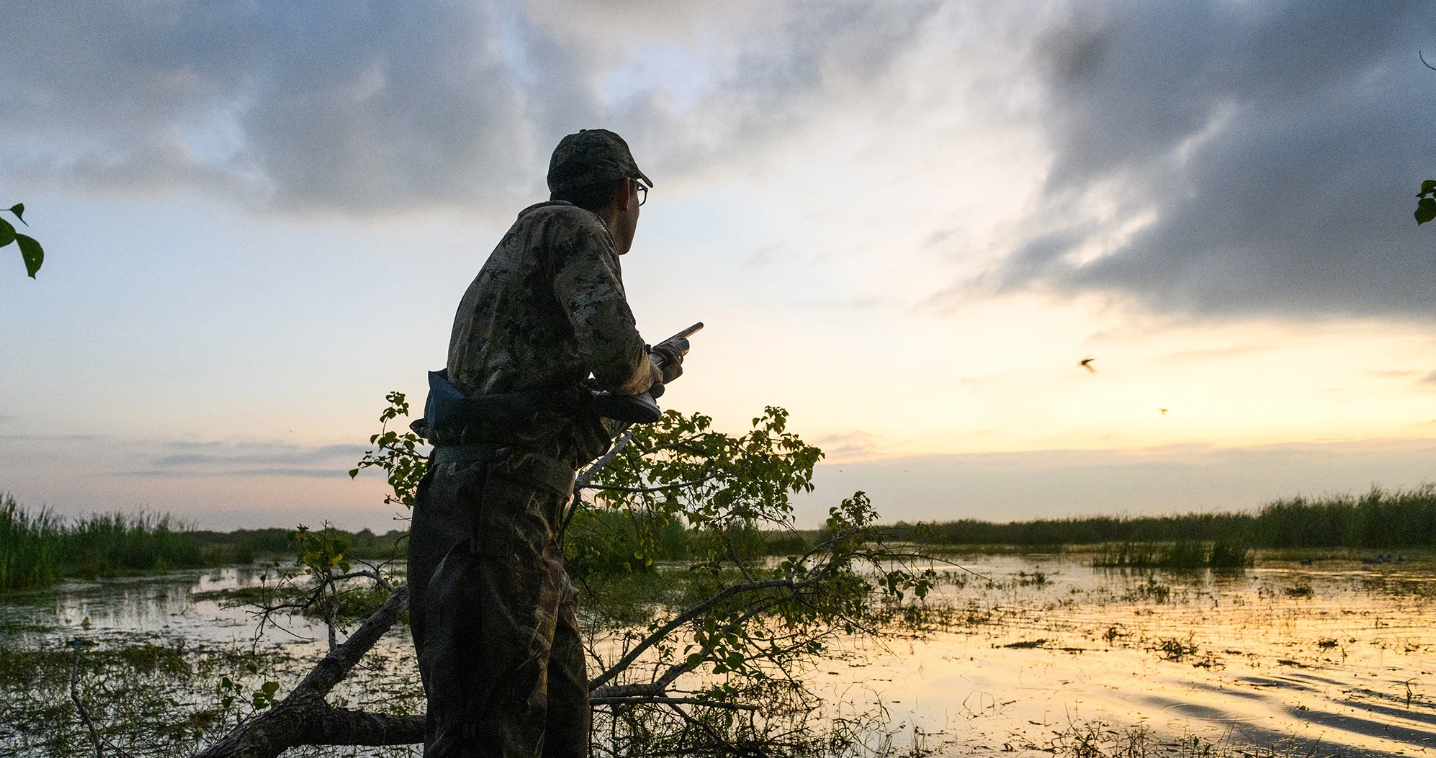
Read Next: Best Duck Hunting Loads
When to Shoot a Duck
Knowing when a duck is close enough to kill is tricky. First, know that ducks circle before they land. A pintail may streak right over the top of you but that’s not the time to shoot it. If you let that that bird work, it will slow down and offer a much easier shot out in front of the decoys. If a duck is coming straight at you, wait until you can see an eyeball before shooting. That will also help with proper lead.
Experience is fundamental to judging shot distance. Too often new hunters think a duck is closer than it is and call the shot too early. At the same time, ducks are killable at 40 yards and sometimes won’t come any closer than that. So, you must weigh the percentages of your shot opportunity and do so in a matter of seconds. It’s not easy. The more you hunt, the easier it will become. To help, you can bring a rangefinder with you and find a decoy, stump, or clump of grass at 40 yards. Don’t shoot at birds beyond that landmark.

Becoming a Better Wing Shot
To kill ducks, you must practice. The best way to do that is by shooting invasive pigeons, crows, and doves during the season in early September. But live birds aren’t always readily available, so shooting American skeet, five-stand, and sporting clays will hone your skills. You can shoot trap as well, but it doesn’t mimic the kind of shots you will take on ducks because every clay is thrown away from your shooting position. (Ducks do the opposite and fly into your spread, or past it.)
If you don’t know how to shoot these disciplines, there’s not much to learn. Skeet and five-stand require you to move from station-to-station taking a total of 25 shots. Sporting clays is an actual course, where you will see multiple clay bird presentations from however many stations there are (typically 10 with 10 shots taken at each stop). In each sport, you simply call for the target and it’s released from a shooting house or thrower. All three teach you the importance of leading a target, which means you get the barrel of your shotgun out in front of the bird (or under it if the duck is dropping altitude into your spread). That is paramount for accuracy. Most folks don’t get the muzzle ahead of the target and miss behind the bird.
Finding a Place to Duck Hunt
Private-land duck hunting can be an expensive endeavor. Guided hunts, leasing, joining a club, or buying property and developing it into waterfowl habitat is a lot of work and takes money. But you can circumvent that by asking landowners for permission. Some property owners will be more receptive than others. Just know it’s becoming more difficult to get free private access because so many hunters are willing to pay to kill ducks. Public-land duck hunting is less costly, but you’re also competing with more hunters, and success rates are lower. A fair number of hunters spend time hunting both private and public within the same season. Here are some of your best options.

Book a Guided Hunt
Cost: $150 to $1,000 per day
Going on a guided hunt is a good way to get started so long as the outfitter is a reputable one. Before you ever book a trip, do some research on the guide service (a Google search goes a long way). Ask the guide for references, what you can expect when you’re hunting, and what you need to bring. You can tell a lot about a guide by how they treat you over the phone. If they are patient and excited that you called, that’s a good sign. If not, move on.
When you’re on the hunt, ask as many questions between volleys as you want. Or you can wait until afterwards to do that. Many hunters go on a guided hunt just to kill ducks. But you’re paying for more than that: You have someone at your disposal who should know quite a bit about killing ducks. They do it for a living, after all. So ask them any question you want while you’re there. It will make you a better hunter when you strike out on your own.

Lease a Hunting Spot
Cost: $500 to $25,000-plus per year
A duck lease will cost you one lump sum of money for a season. And leasing can range from a single blind to multiple properties. Hunters will often pool money together and go in on a spot. If you don’t have any friends that duck hunt, this option will be a tough one for you. But occasionally hunters need to fill a spot, and generally anyone with the money to join is welcome. Keep an eye on duck hunting Facebook pages too.
Pay a Trespass Fee
Cost: $100 to $1,500 per day
A trespass or “gate” fee is a transaction in which you pay the landowner a specified amount of money for access on the given day you want to hunt. This form of hunting allows for more opportunity. Instead of being locked into one lease all season, you can bounce around to different wetlands. It also gives you the chance to see more hunting locations and learn how to hunt birds in those places. It can lead to a good relationship with the landowner as well if you play your cards right. One day, the landowner may offer you exclusive hunting rights, and a prime location could be all yours.
Ask for Permission
Cost: $0
There are plenty of places in the U.S. where landowners will grant you access to their property. Most of them are west of the Mississippi River, but that doesn’t mean you shouldn’t try if you live in the eastern half of the country. If you’re just getting started, think about any farmers you know. Even if they don’t have ducks on their property, they may know someone who has a small pond and won’t mind if you hunt it a few times during the season. I’ve had my best luck finding small water, like cattle tanks, with three or four limits of ducks on them, and asking the landowner if I could hunt it once or twice with one other person.
A lot of farms are being bought up by large corporations, and you will want to steer clear of those for the most part. Look for family farms (onX Hunt is a great tool) and be courteous when you ask. If you get access, treat the property better than if it were your own. Pick up all your spent shotshell hulls and garbage (even if it’s not yours). If the landowner says no, thank them for their time. Next time, you might catch them on a good day when they are feeling generous, and they will remember you were respectful. If they say yes, be sure to thank them later. Dropping off a case of beer or Casey’s gift card can help ensure you have a place to hunt in the future.
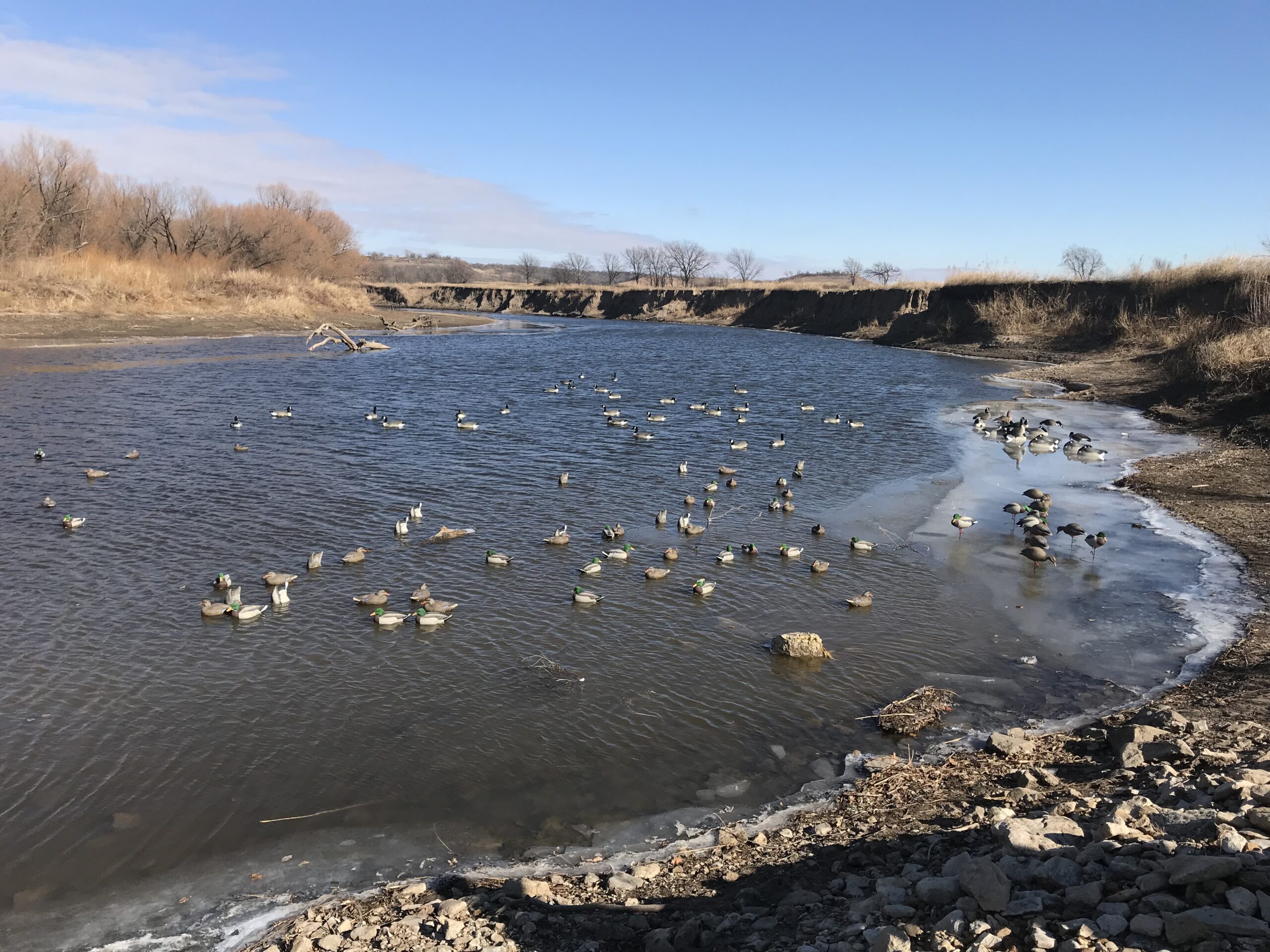
Hunt Public Land
Cost: $0
This is where most new hunters get their start. If you have never hunted public ground, talk to the site manager of the location you intend to hunt so you know the rules. Some public land has no wetland management and is there for anyone to hunt, so you can just go scout it and find the best duck holes. Other places have daily or yearly draws to determine who is allowed to hunt. And still others have a line at the boat ramp, where you aren’t allowed to launch until a specific time. That’s a first come, first served situation, and getting up extra early pays dividends.
Generally, public land is competitive and pressured, but that’s not always the case. There are some public venues that are overcrowded and some where you could be the only boat for miles. Be ready for both. Hunting public land is tough, but it will make you a better hunter, because you must figure out where the birds are before you hunt, how to get to them, and work around other hunters to be successful. You will also learn to shoot better because there are often fewer chances to kill ducks, so you’ll want to make the most of any opportunity.
Join a Duck Club
Cost: $2,500 to $100,000-plus per year
New duck hunters are eager to hunt ducks, but you should not join a duck club—even if you have the money for it—right away. Spend at least a season asking other hunters who belong to the clubs you want to join how the hunting is, and what the rules are. Each club will be different, and you want to make sure you choose one that fits your style of hunting and personality. You will find that many (not all) duck hunters are very particular in the methods they use to kill ducks. And when you club hunt, the way one blind hunts can affect the success of the blinds around them. So, finding a place that syncs with your approach to duck hunting is paramount. Be ready to wait for a spot to open at club, too. Some have waiting lists, especially if the hunting is good. Just take your time during the process of selecting a club. I know you want to start shooting ducks, but you’re better off waiting on a spot to open at the club where you feel most comfortable as opposes to jumping the gun and buying into a club that you wish you hadn’t.
Buy a Duck Property
Cost: $5,000 to $25,000-plus per acre
If you can afford the acreage to build your own wetlands, that is ideal. This allows you to develop the land your way without consideration for any other owners. But unless you have experience moving dirt and laying pipe, you’re going to need to employ a company to dig the pools and tap the wells, an added expense. Plus, you must maintain the property, plant, and pump water every year, also costly. Same as with selecting an outfitter, do the research to find a reputable developer. Building a wetland is no simple task, and a good manager will have ideas on how to get the job done efficiently while keeping costs to a minimum. There are also federal- and state-funded programs, like enrolling your property in CRP, that could cut costs, so be sure to inquire with your builder or local wildlife agency.
Basic Tactics for Any Duck Hunt
How to Scout for Ducks
Scouting is the key component to being a successful duck hunter. Seasoned hunters spend more time looking for ducks than they will hunting them. That’s because patterning birds—and knowing what they will do in the morning—lends to better results. Regardless of species, most ducks will concentrate on larger watersheds overnight called a roost (divers and sea ducks will congregate in large rafts on the open water). You can find handfuls of ducks roosting on smaller waters as well. In the morning and evening, these birds will fly out to feed. This is when you need to be in the truck scouting.
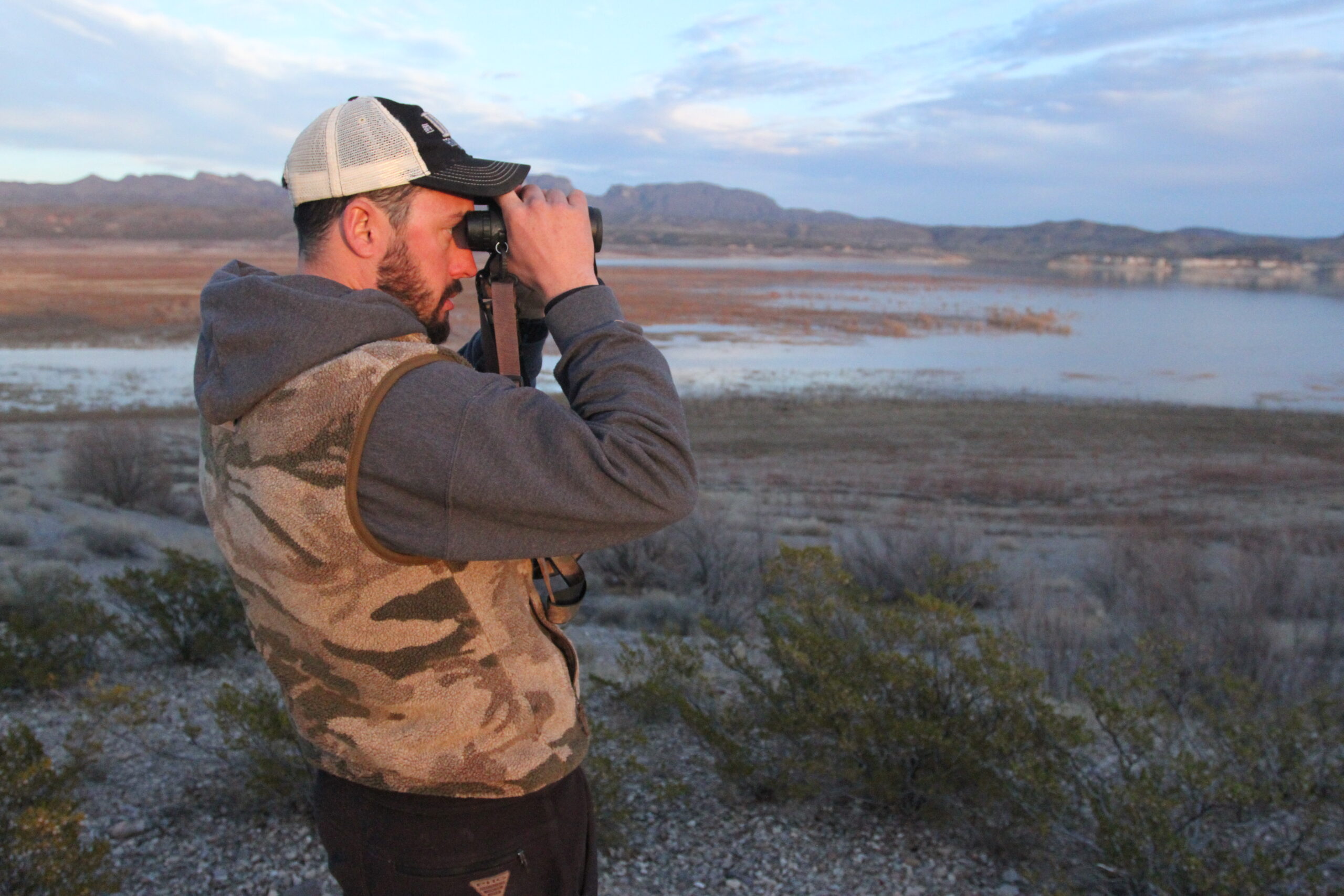
Scouting for Puddle Ducks
In mild weather conditions, expect puddlers to target moist soil units and some flooded bean and cornfields. In the early season, teal, shovelers, gadwall, and mallards are feeding on invertebrates, which means some of the best hunting is found in recently flooded fields where the bugs have been hanging out all summer. As the weather turns cold, any open water with food in it is a good bet. Ducks (mainly mallards, pintails, and wigeon) will also transition to fields to feed. Harvested corn, beans, milo, and peanuts are all viable options for ducks to fill their bellies. You don’t always have to be in the same wetland or field as the ducks to kill them. If you can’t get on the X (the main area where ducks are feeding), get as close as possible. Hunting under their flight line works, too.
Scouting for Divers and Sea Ducks
Both these species tend to feed based on the tides. Low tide will expose submerged aquatic grasses, mussels, and crustaceans near land. The ducks will raft near islands and granite outcroppings to feed. These locations are perfect for hunting. But again, if you can’t get on the X, get on the birds’ flight line.
The Most Basic Setup for Ducks
Once you find ducks, it’s time to set up on them. When you set a decoy spread it should look natural. Ducks don’t sit on the water in an “X” or “J” shape so you shouldn’t think about shapes when throwing decoys. If you look at ducks on the water from above, they are scattered in all directions with some small groups gathered in random pockets. Before I throw decoys, I pick the spot I am going to shoot from. If that’s a permanent blind, it’s easy. If I’m freelancing and hiding on a levee, timber line or boat blind, I stand or park the boat exactly where I will be hunting from. Then I decide the window I want birds to land in and toss one decoy to the left and one to the right as markers and keep my spread inside of that. You always want the wind at your back or blowing from the left or right because ducks prefer to land into the wind.
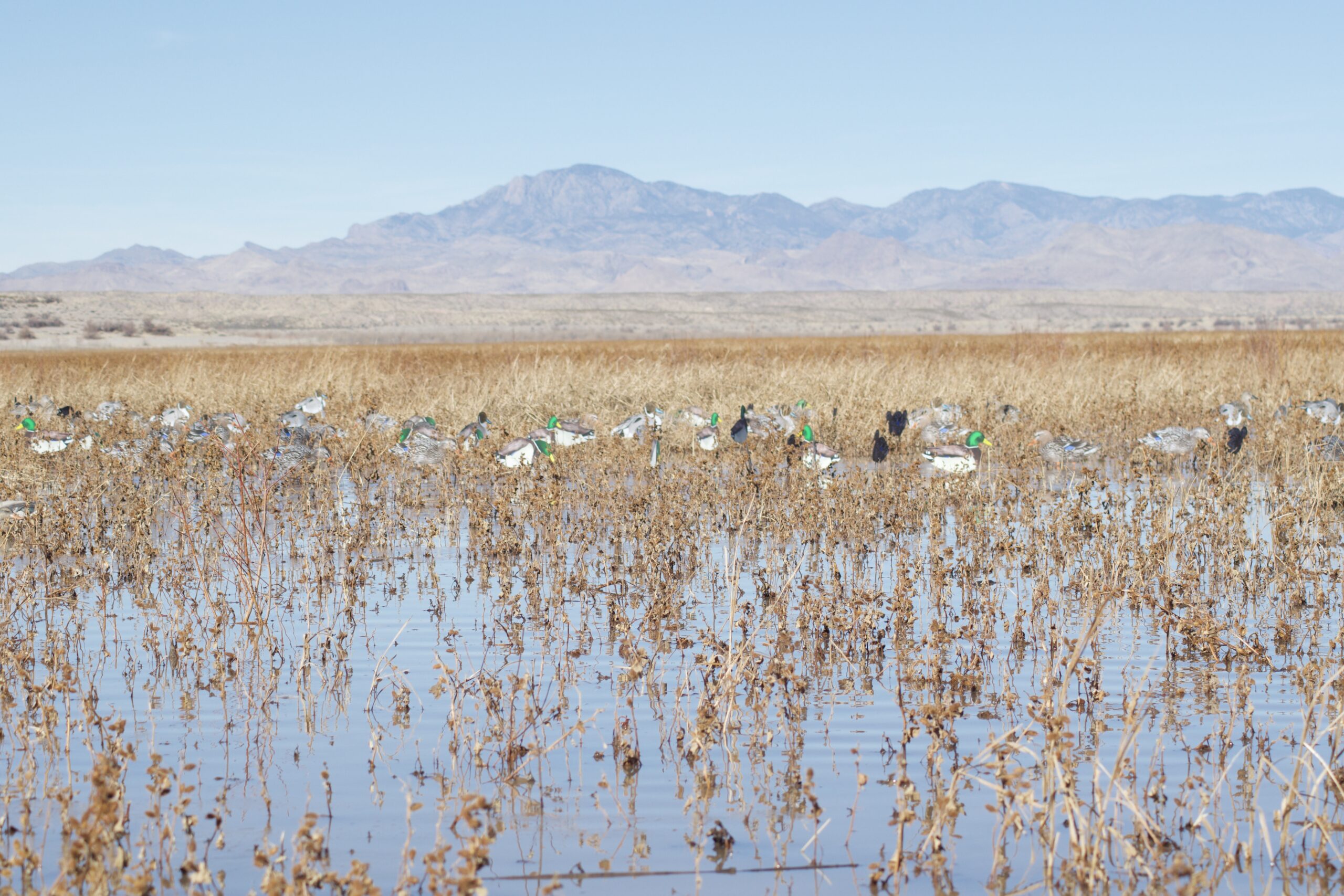
Small Water Hunts
For hunting puddle ducks on water, throw decoys inside your markers, and then concentrate some small groups of decoys in areas you want ducks to land. Thicken the spread with decoys closer to your shooting position. String some floaters out 40 or 50 yards away from the blind, giving birds a runway to land in the pockets of decoys. I like to use Canada goose decoys as stoppers. Most ducks will see those big birds and land short of them. Make sure to put spinning-wing decoys within shooting range, but they do not need to be placed where you want birds to land. Electronic, butt-up feeders scattered in the spread add more realism.
Field Hunts
In fields, mallards waddle around picking at harvested grains, so a majority of feeding greenhead and hen decoys is the right way to go. Mallards typically field feed in big groups, so you need at least four-dozen full-bodies on stands. You can supplement the spread with Canada goose full-bodies and silhouettes of any duck or goose species. Make sure to bring multiple spinners. Mallards are very attracted to them in the field.
Diver and Sea Duck Hunts
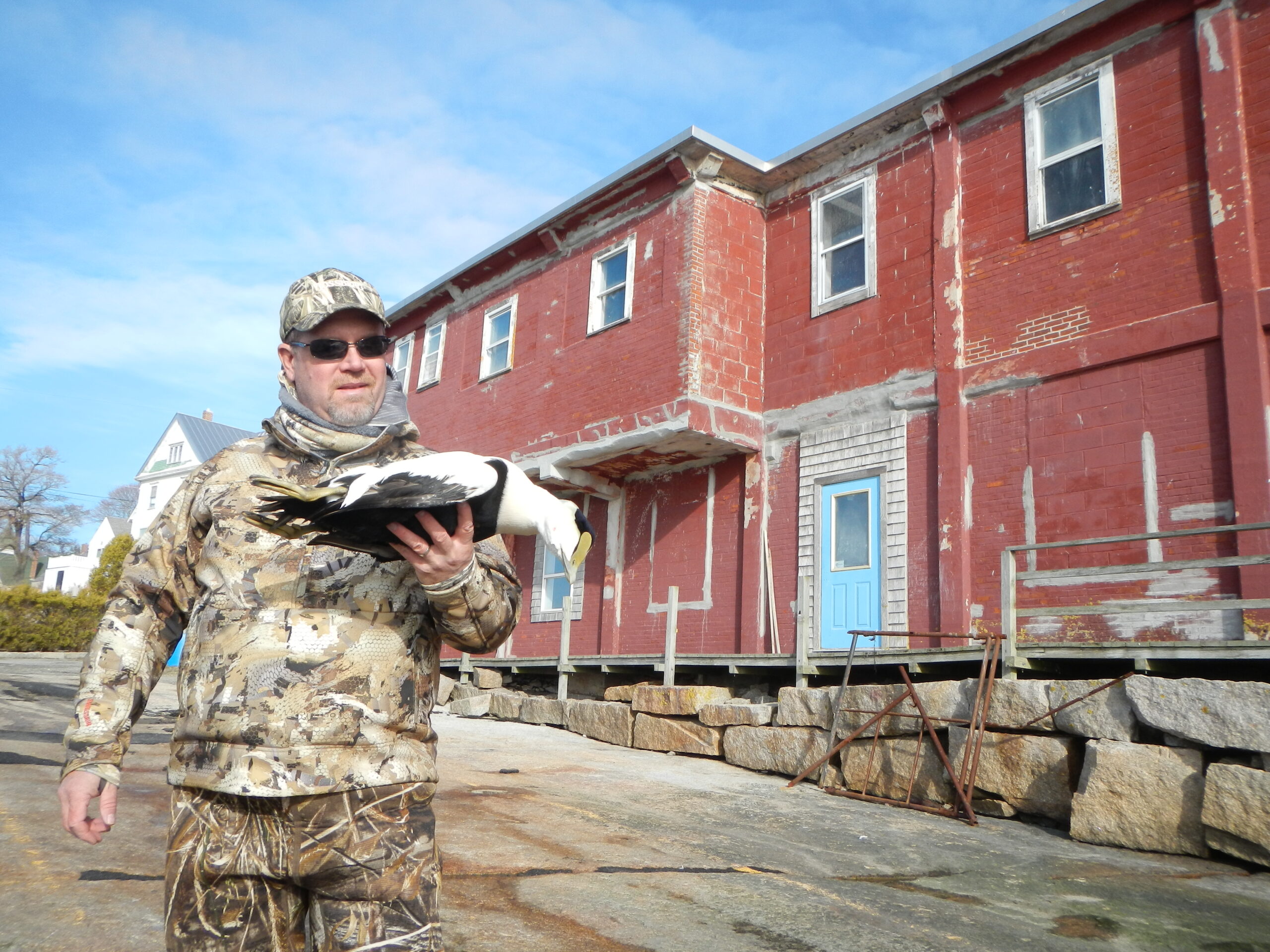
Most diver and sea duck hunts require long lines of decoys strung out from your shooting position, which can be from an island, boat blind, or layout boat. The birds see these rafts and will sometimes land with them, but also just buzz the spread low, just above the surface of the water. You can also use a Decoy Raft, which is a large piece of floating material you can clip decoys onto.
More Tactics for Hunting Ducks
You don’t have to hunt ducks from a blind over decoys to kill them. Pass shooting, jump shooting, and float hunting are all other options that require far less gear, time, and money. You can have just as much success using these unconventional methods as the traditionalists hunting around you. But be aware that some folks may not approve of such tactics, particularly if you jump shoot large rafts of ducks or pass shoot birds that look like they are coming to a competitor’s decoy spread. There’s nothing unethical about hunting in such ways. I am only giving you fair warning that if you hunt in an area that experiences high hunting pressure, not everyone will be thrilled that you are employing these methods.
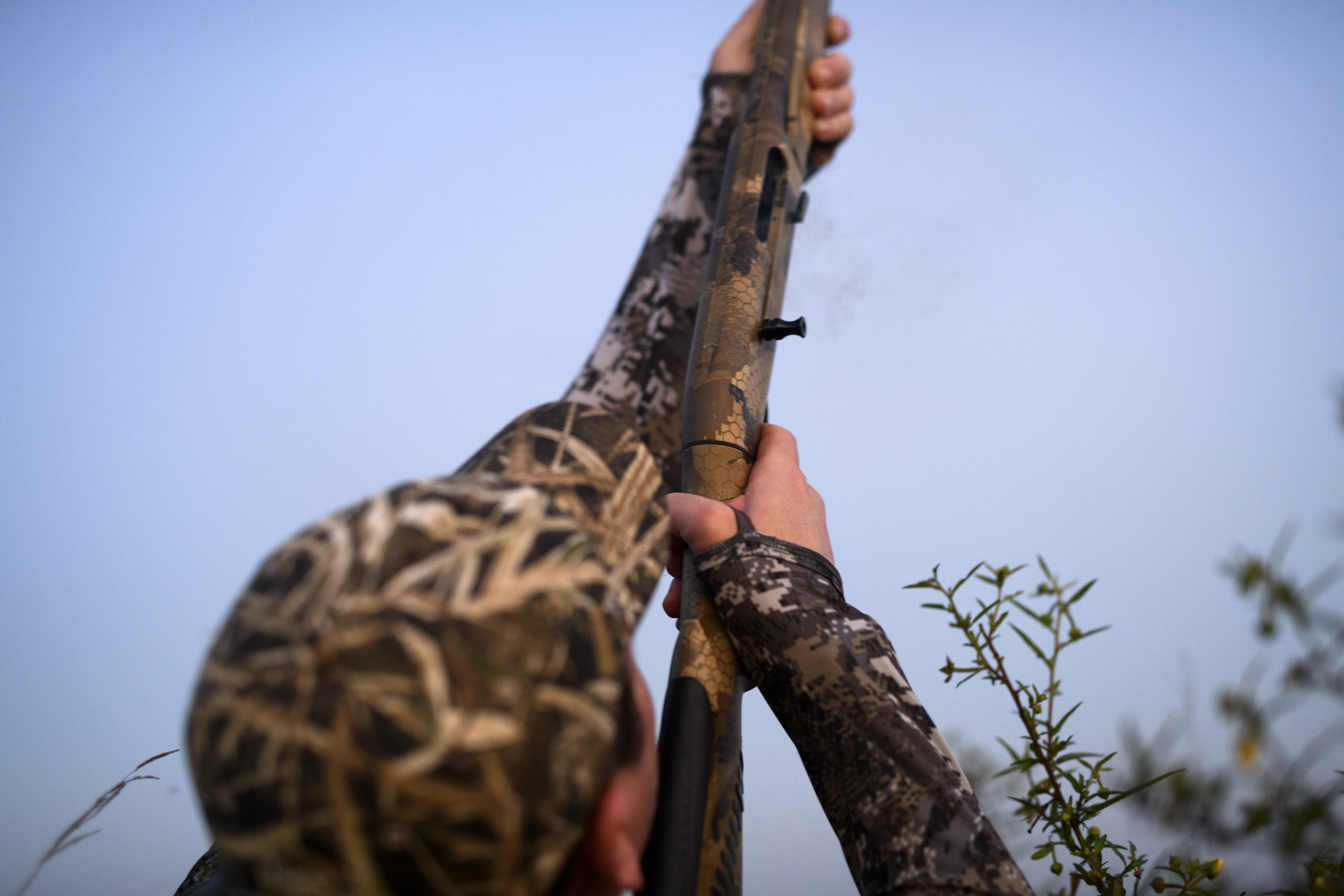
Pass Shooting
Ducks will use similar flight lines each morning and afternoon as they transition from roost and loaf water to dry fields, flooded ag, and moist soil units to feed. If you do the work and figure out where the birds are flying every day, you get under them and shoot as they pass by you—hence the term “pass shooting.” It’s best to find a thick hedgerow or treeline to stay concealed in, so ducks are none the wiser. As they approach, you can raise up, and shoot. The best time to pull the trigger is when birds are straight above, and you can see the whites of their bellies.
Jump Shooting
Ducks spend most of the time on the water feeding, dabbling, preening, and loafing. So, there are ample opportunities to sneak up on them, get the birds to “jump” off the water and shoot any ducks in range. I recommend doing this only when a small number of bird are in your area. If you find thousands—or even just 50 or 100—ducks and jump them, they could be close enough together that you end up killing more birds than you are legally allowed to, and wound ducks that will never be recovered. Plus jump shooting a flock of birds puts unnecessary pressure on the resource.
Float Hunting
If there is a small river near you that holds ducks, floating it in a kayak with your shotgun handy is a challenging way to try and shoot a limit of birds. You will put the boat in and float the river, hoping to run across small rafts of ducks that flush as you get close. As they jump off the water, you can shoot them, which can be challenging because you are shooting from a moving boat. If the ducks flush out of gun range, just hang tight for a few minutes to see if any trickle back. It’s also likely the birds will just move to a different stretch of the river, so you may get a second crack at them.

Transporting, Butchering, and Cooking Ducks
I touched on this earlier, but you must be extremely diligent when transporting ducks from the field to your home to remain legal. Tag birds as soon as the hunt is over, and always keep them with you until you arrive at your residence. Leaving untagged ducks in the field while you go back to grab the truck is against the law. You need to tag the birds or take them with you. Don’t transport other hunter’s ducks if they are not tagged either.
READ NEXT: Goose Hunting Tips and Tactics
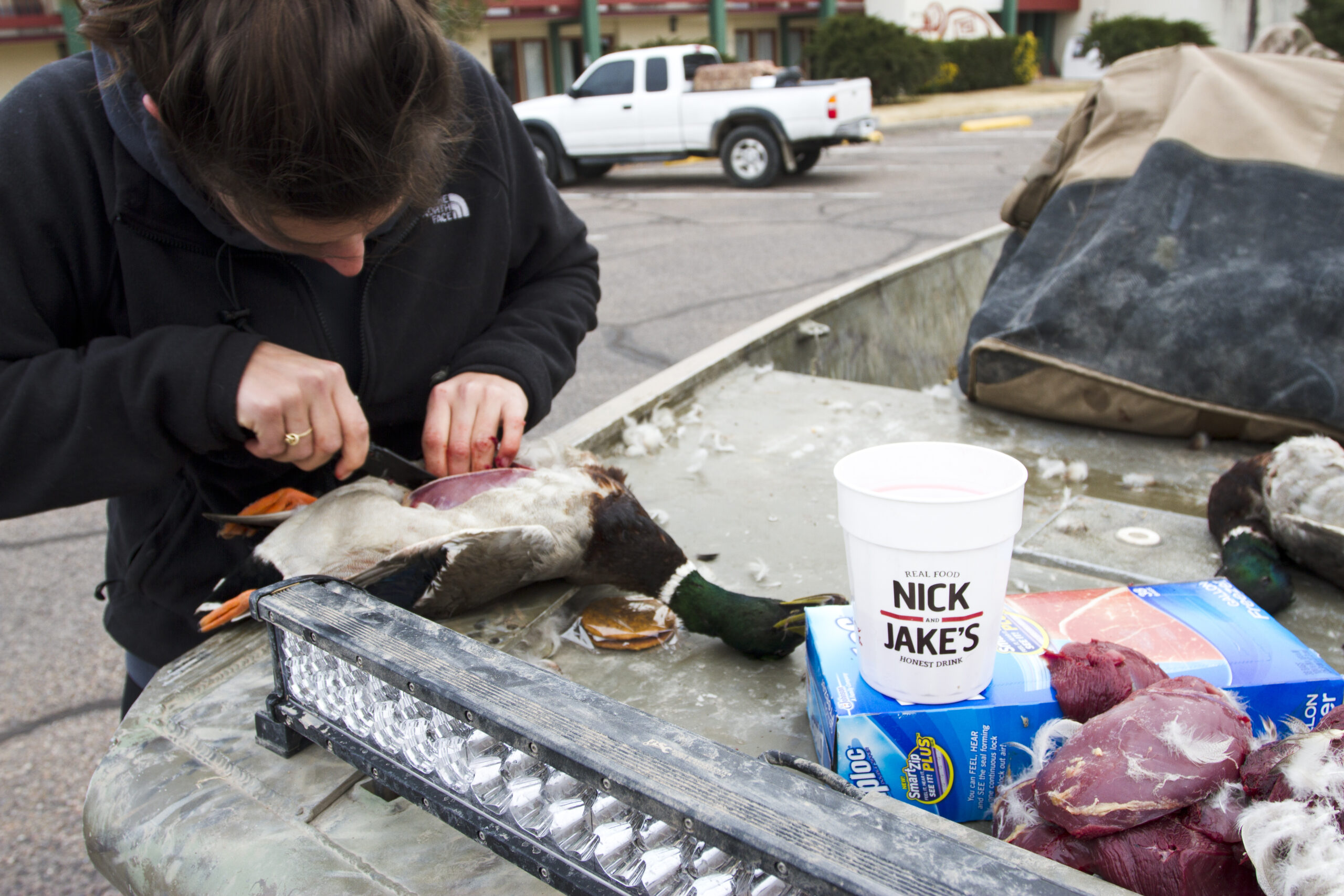
If you are hunting out of state, dead birds must remain tagged with a wing on until you are home, unless of course you eat the meat. If you breast out birds and put them in the hotel fridge, you’re breaking migratory bird laws because you are not yet at your residence. You still have to transport those birds home and they need a wing on for identification purposes to do so. Same goes if you butcher the birds at a friend’s house—the wing must stay on until you’re home. The video above shows a simple way to breast out your birds to remain legal. If you’re in a state that requires the thigh to be harvested as well, the entire bird can be plucked, and the wing left on.

How to Butcher and Cook Ducks
This video will show you how to properly butcher a duck. As for cooking ducks, there are an endless number of recipes, some of the best of which can be found in the list below. Here’s our guide on how to cook duck.
- Ruth’s Wingmead Duck Recipe
- Duck Breast with Currant Glaze
- Pan-Seared Duck Breast
- Cured Duck Breast
- Sea Duck Bourguignon
- Grilled Duck with Sour Cherry Salsa
- Wild Duck Soup for People Who Don’t Like Duck

Final Thoughts on How to Hunt Ducks
The key to becoming an accomplished duck hunter is patience in just about everything you do. Don’t rush into anything, don’t get discouraged when you fail, and always hunt a little bit longer than everyone else. Putting in the time on the front end will produce better results in the years to come.
